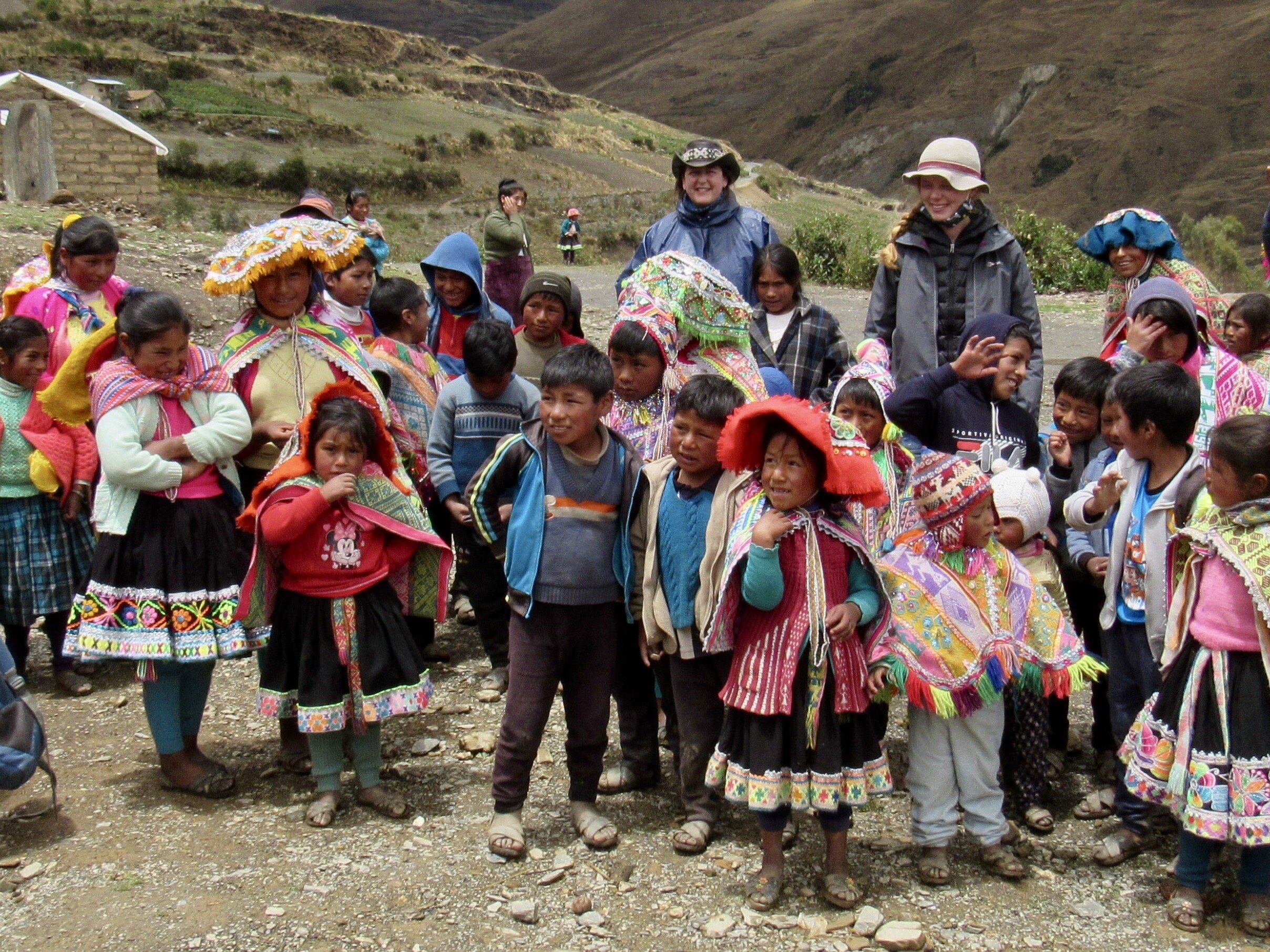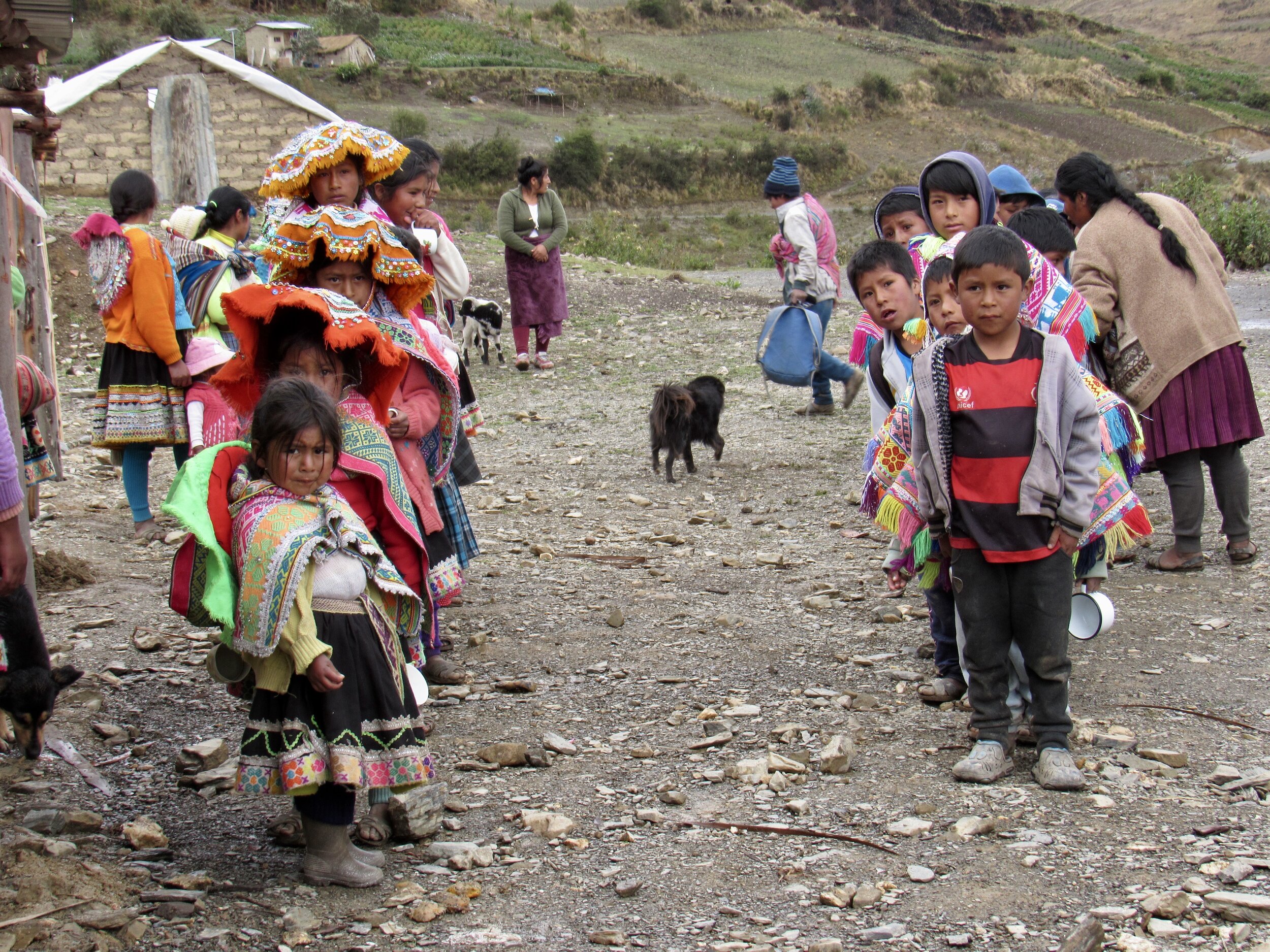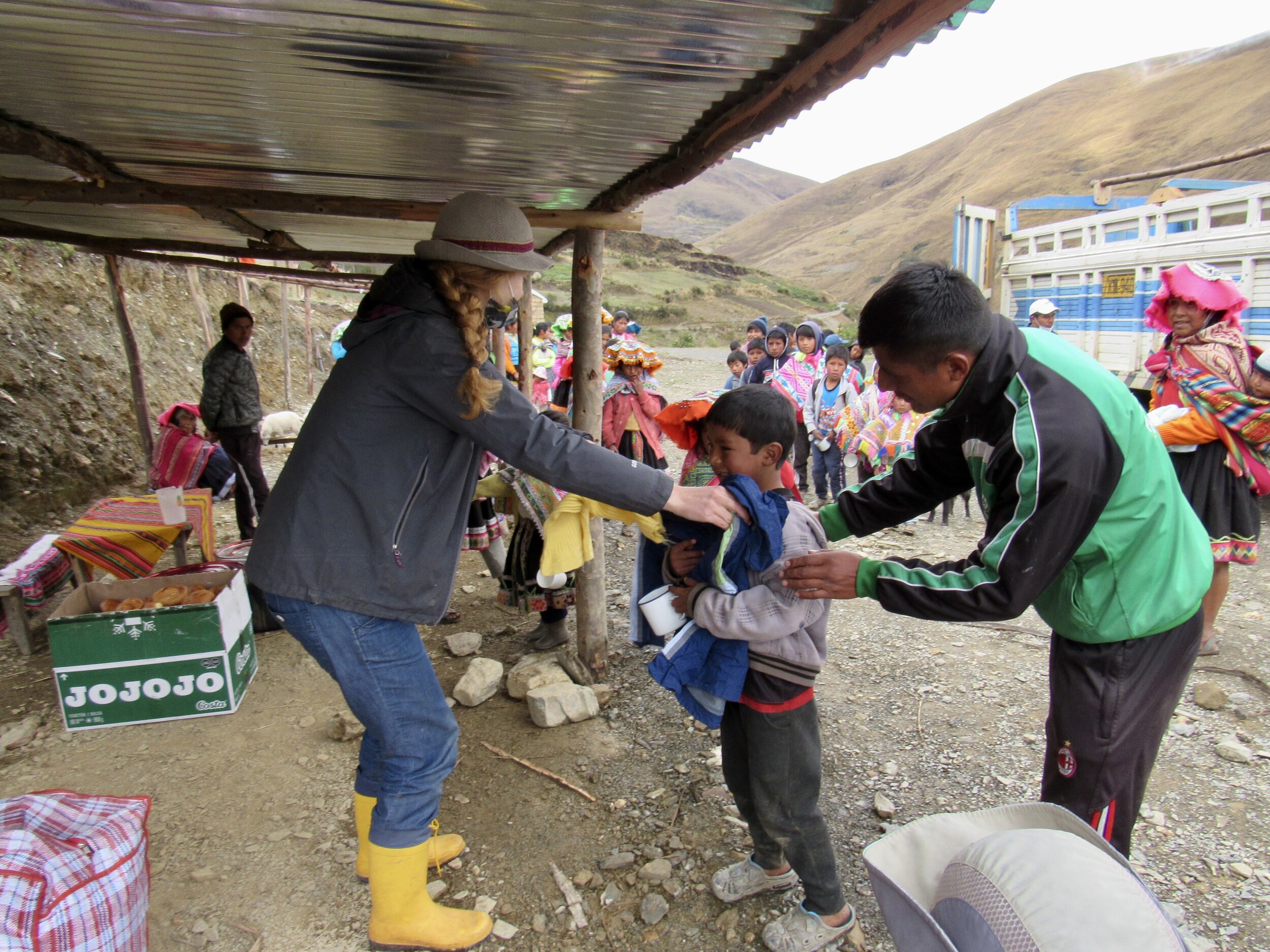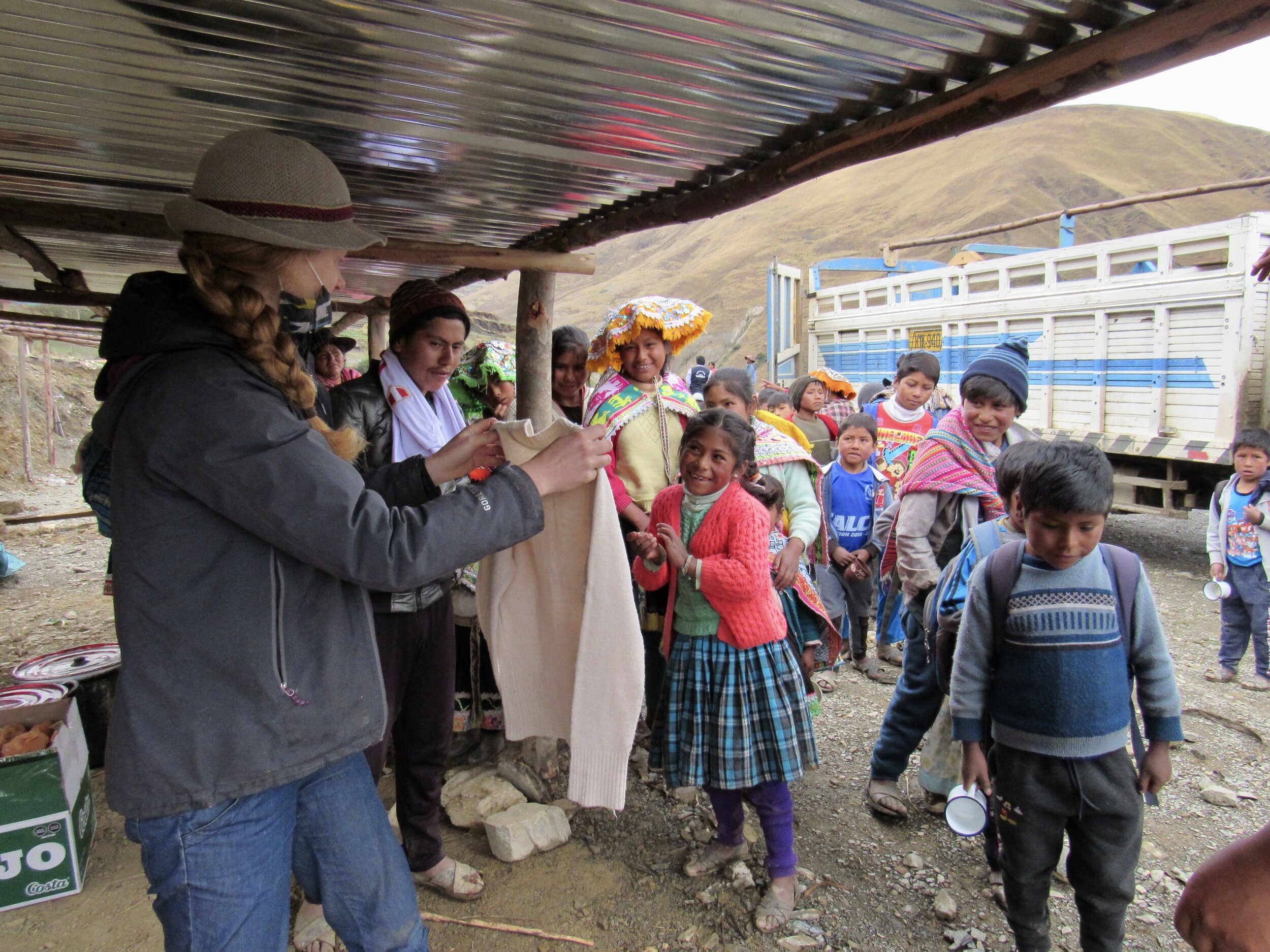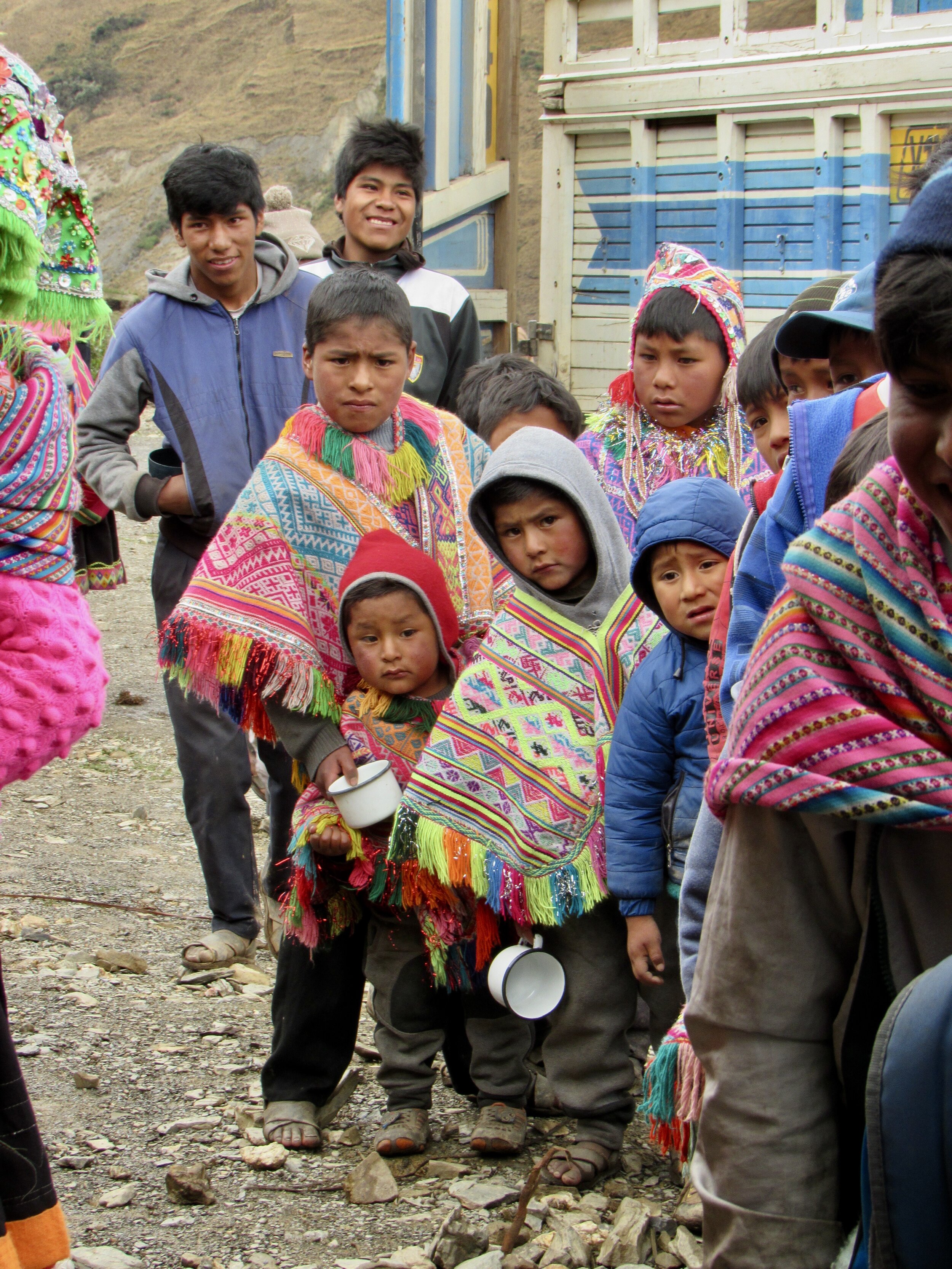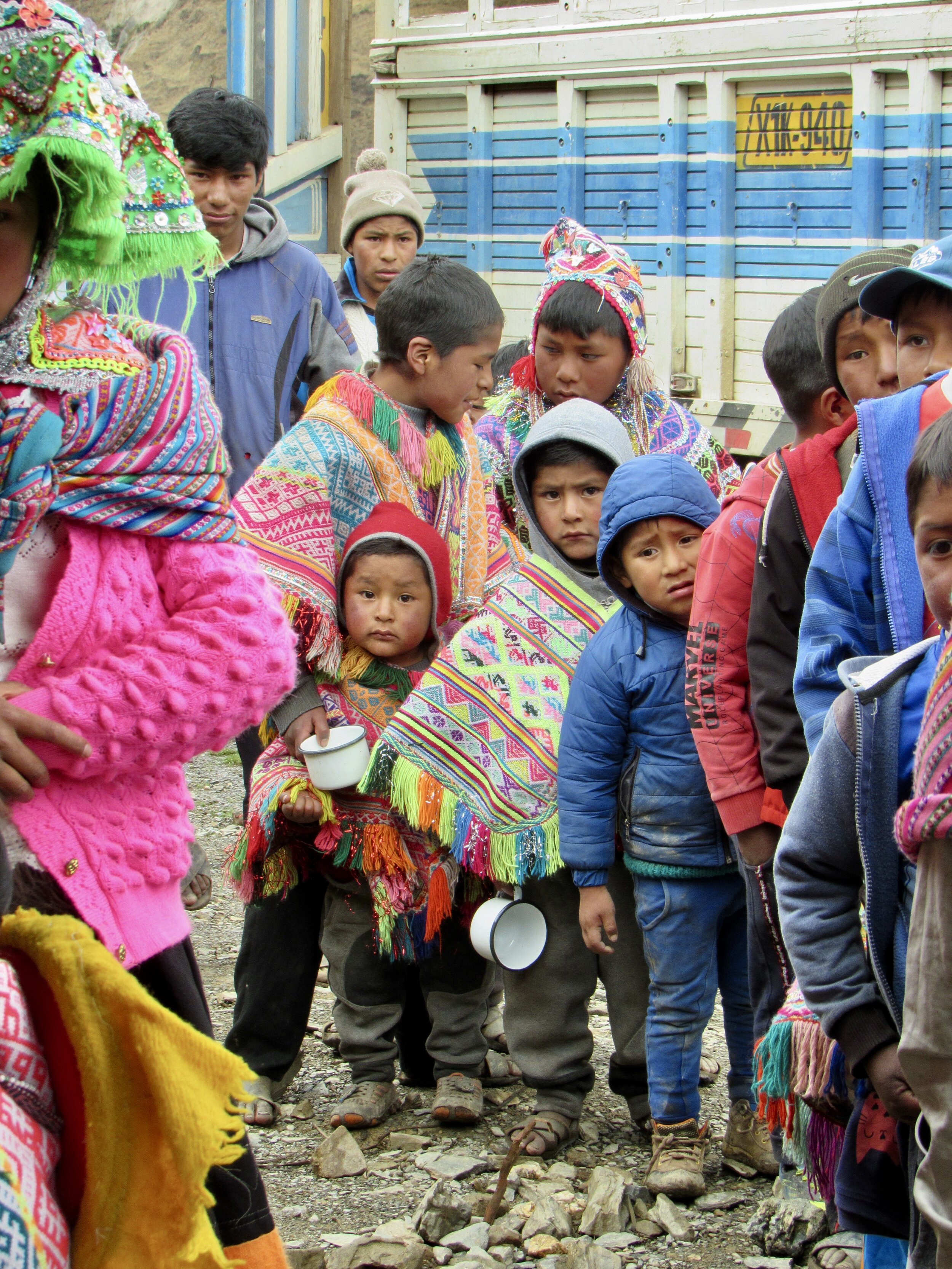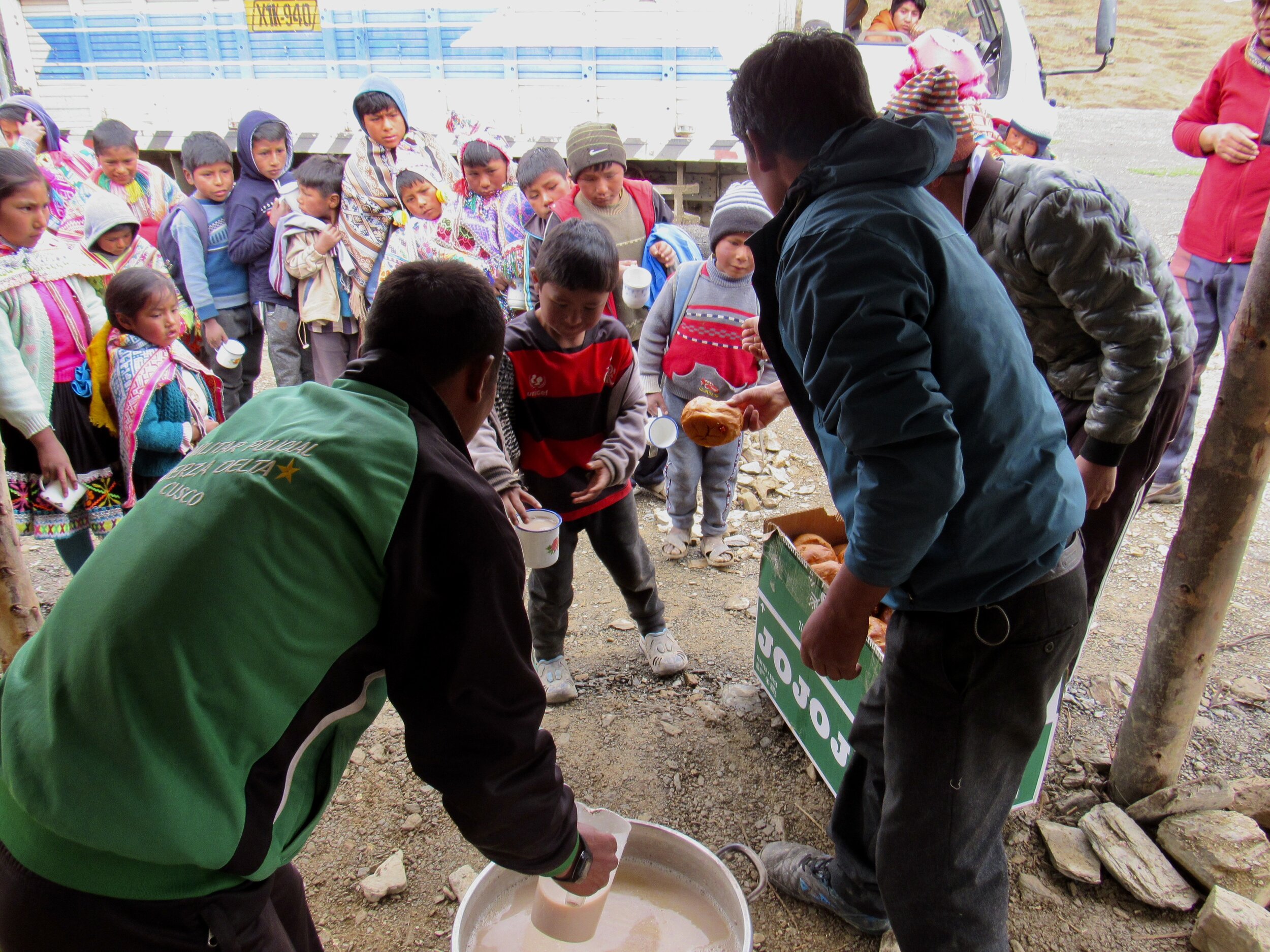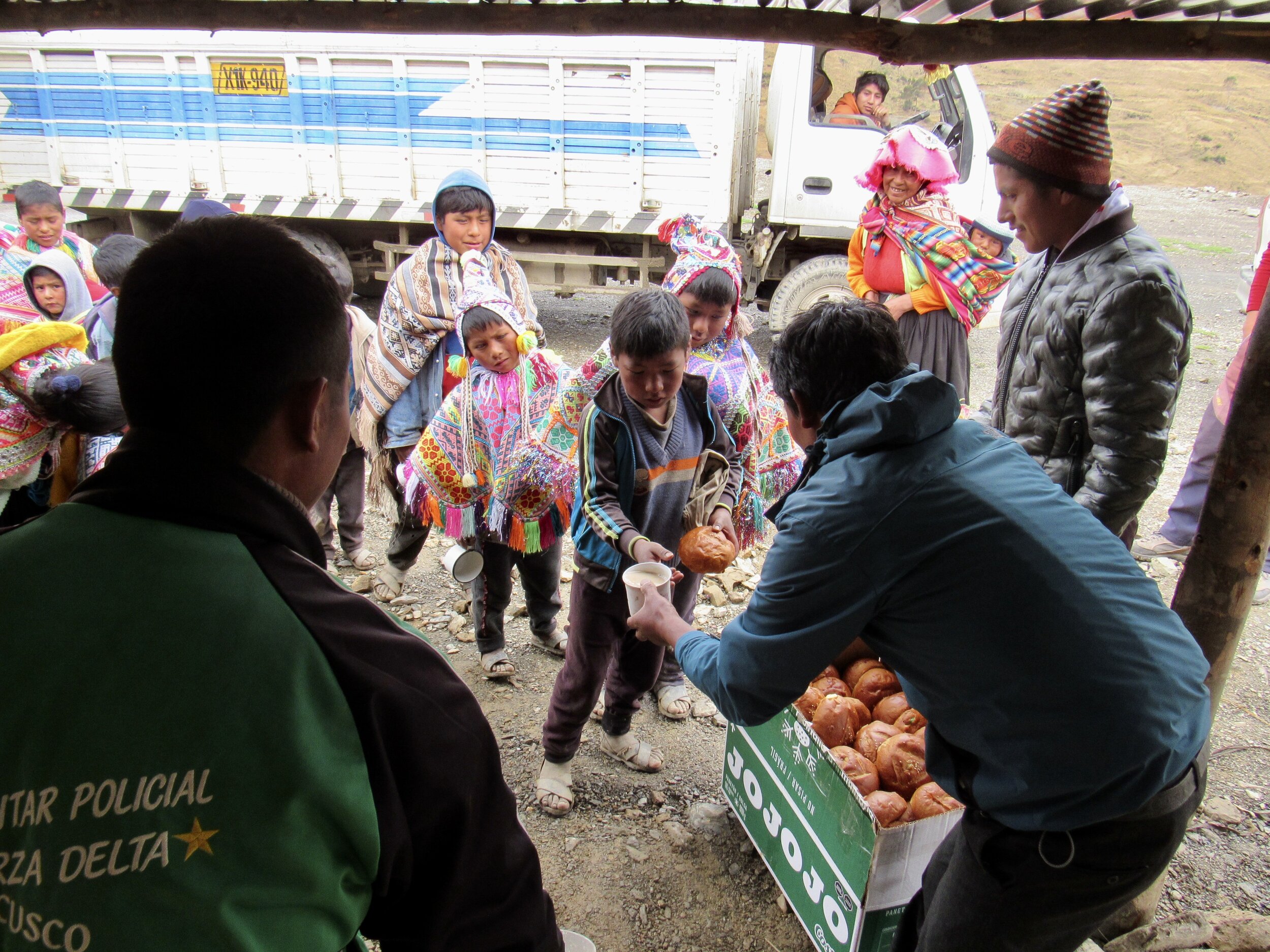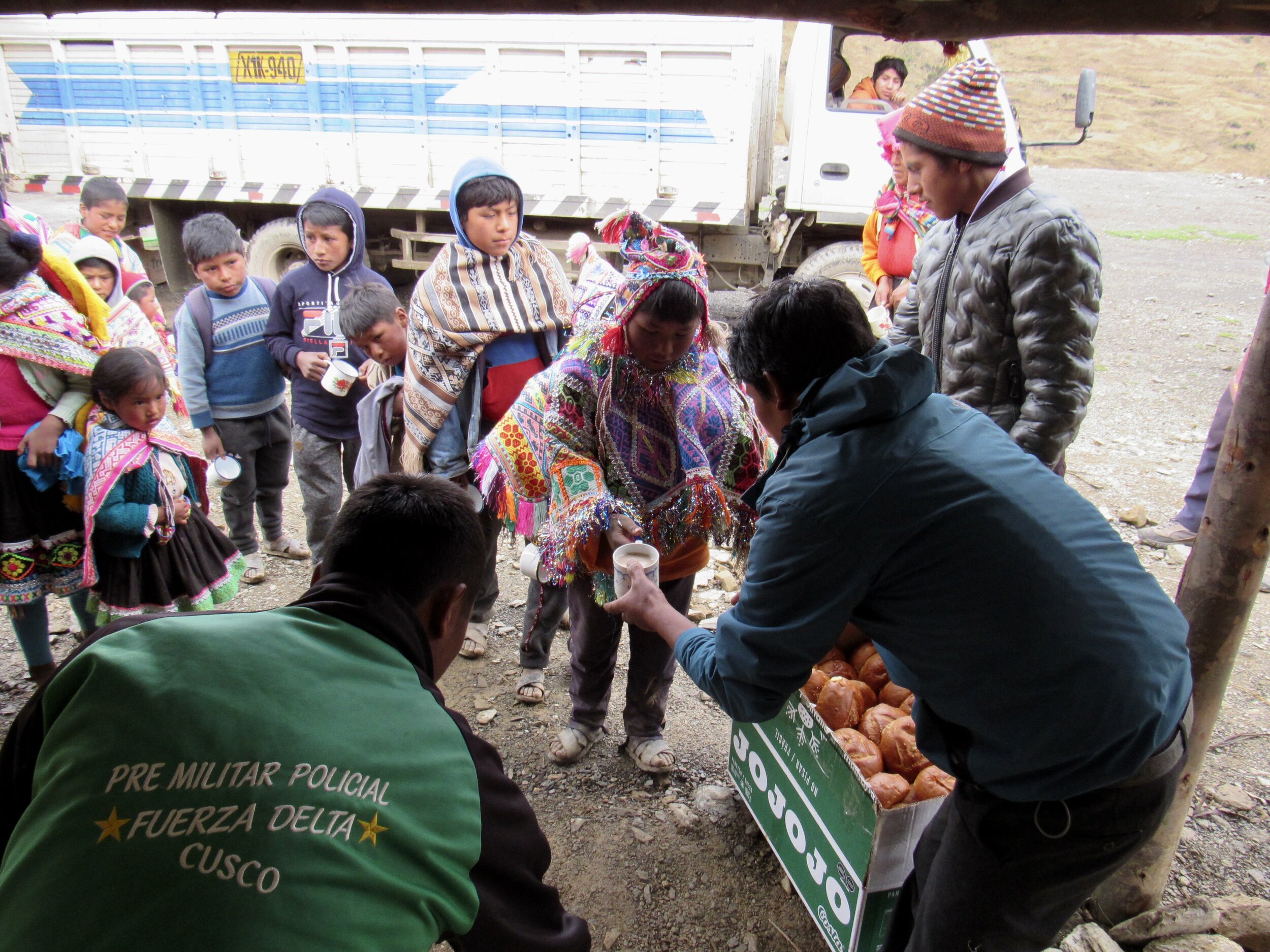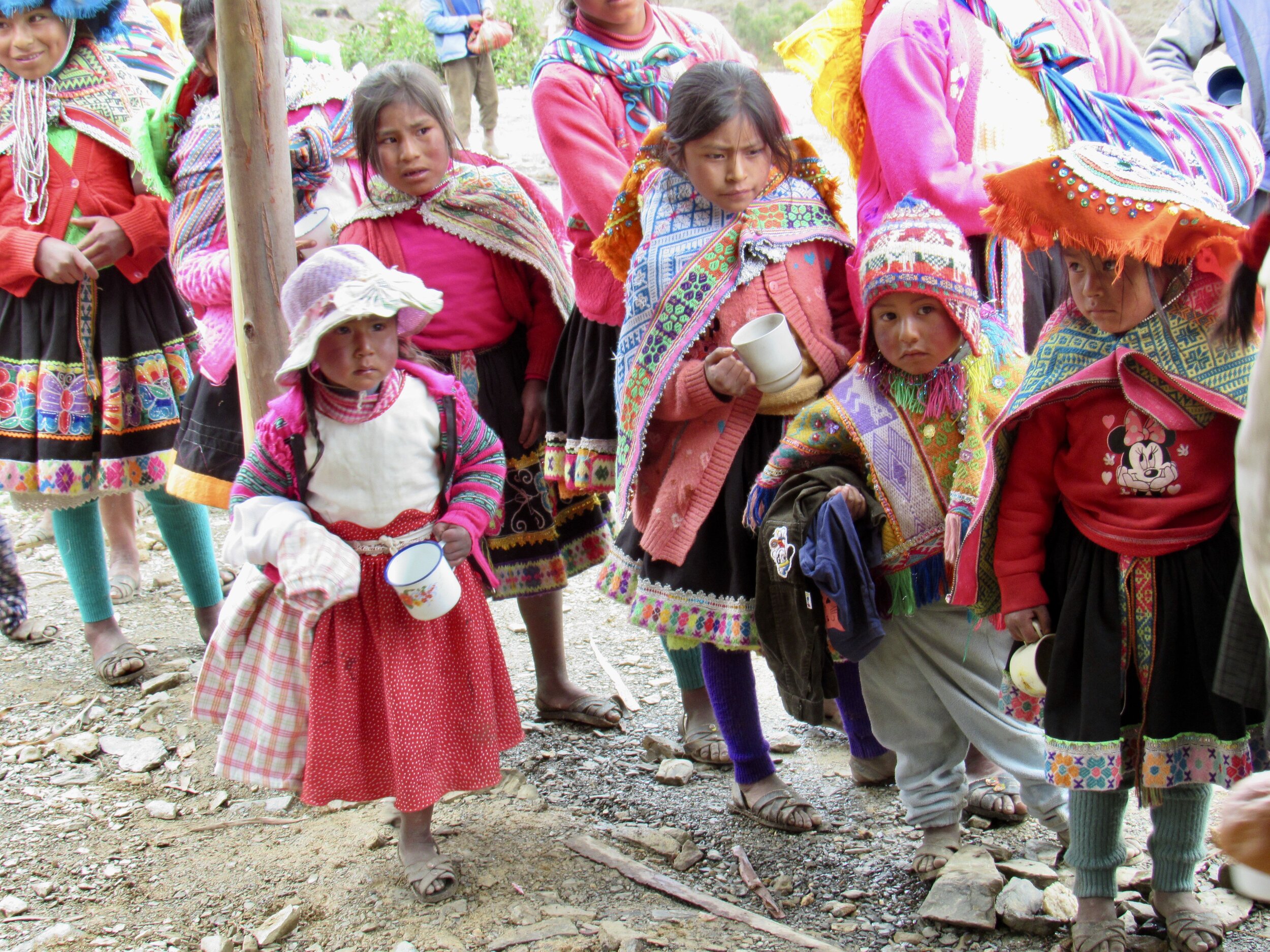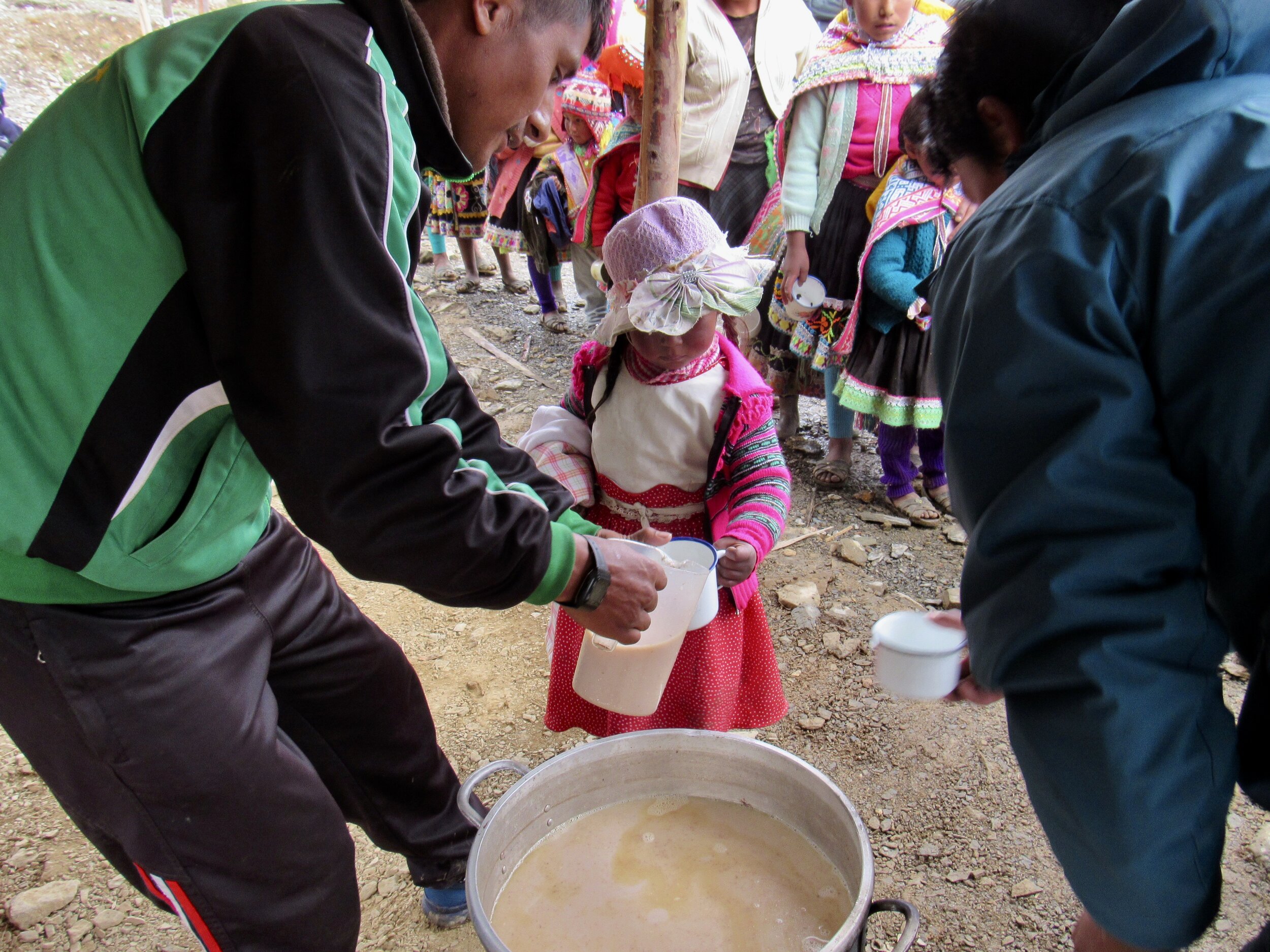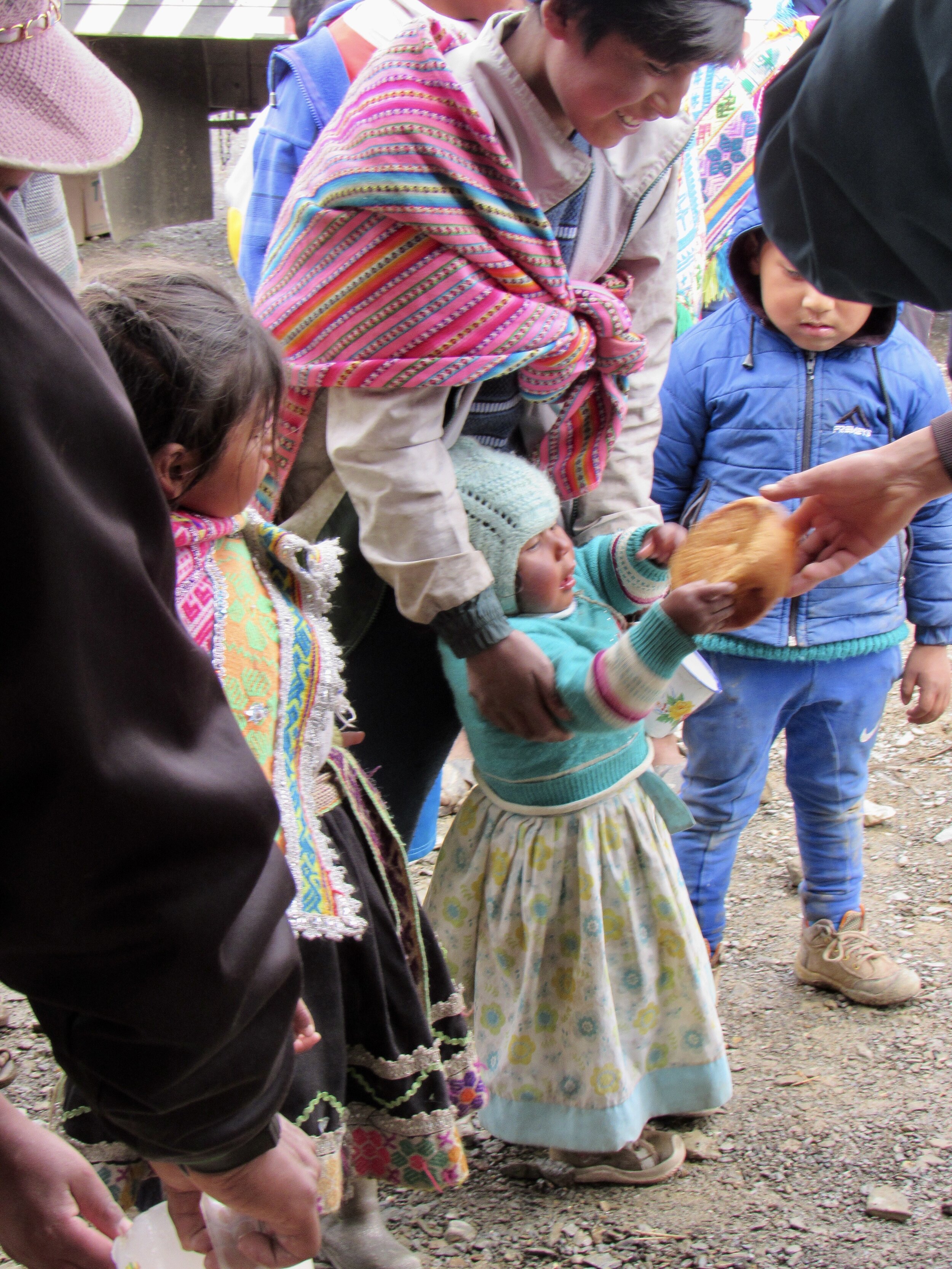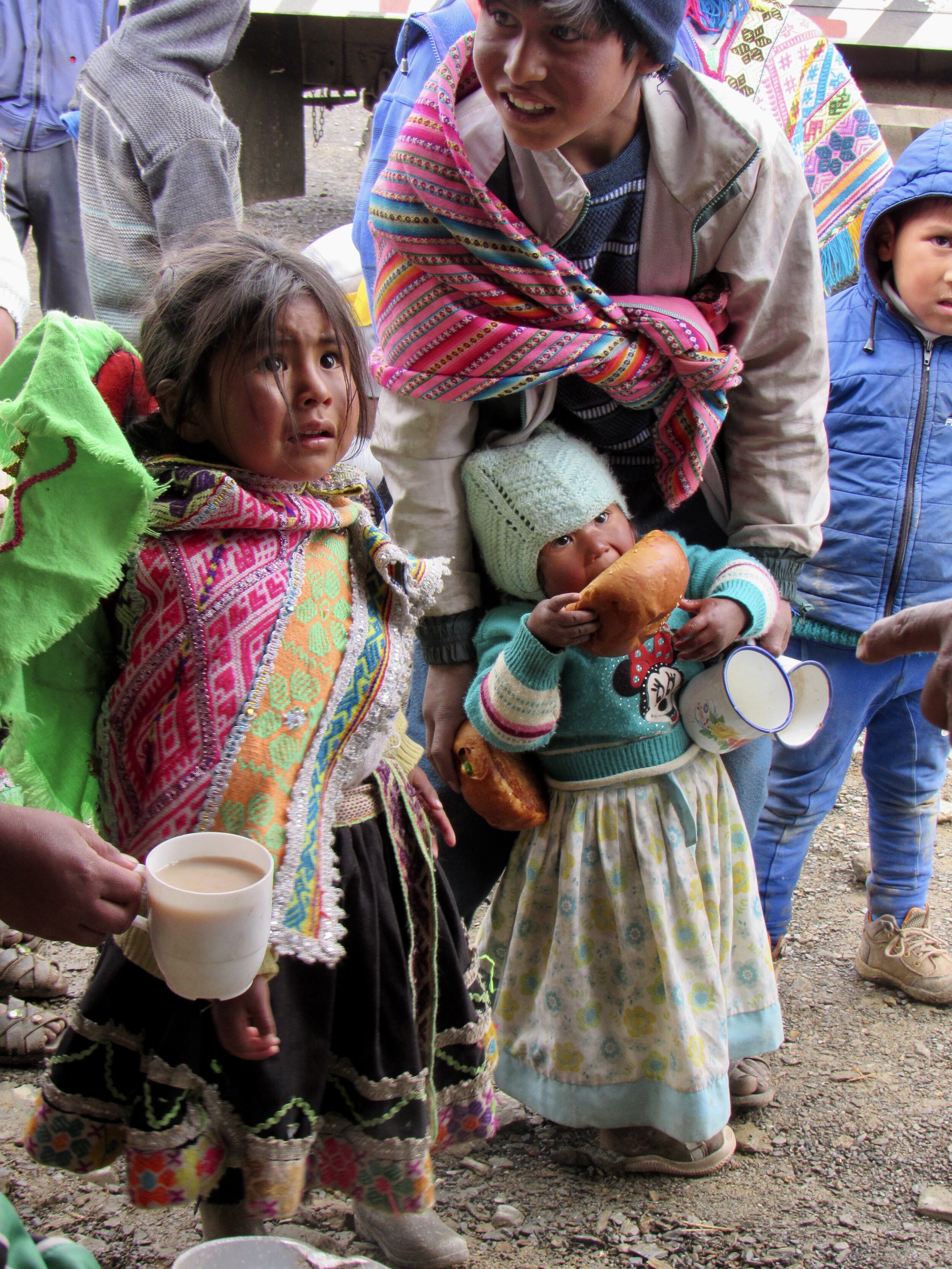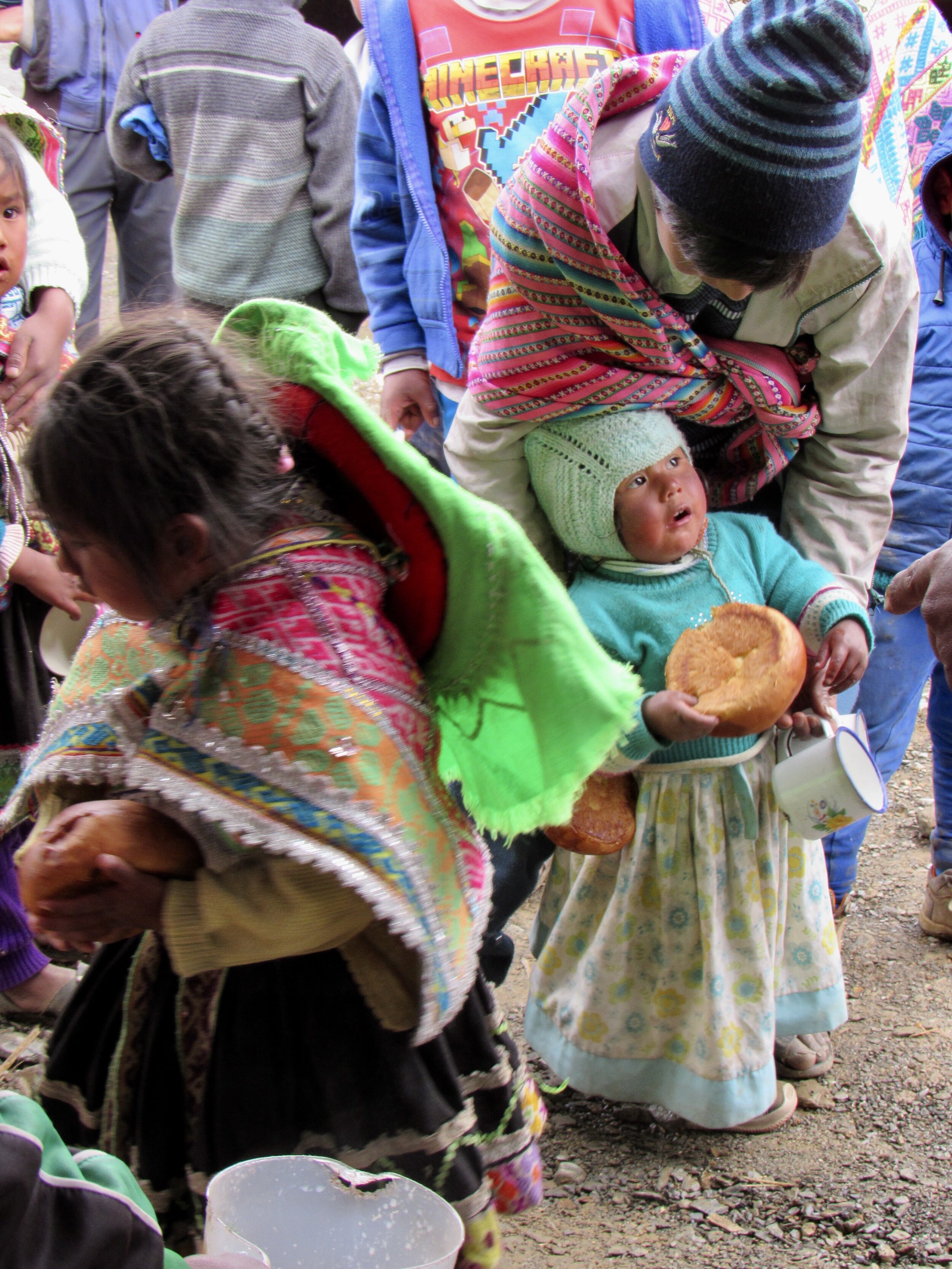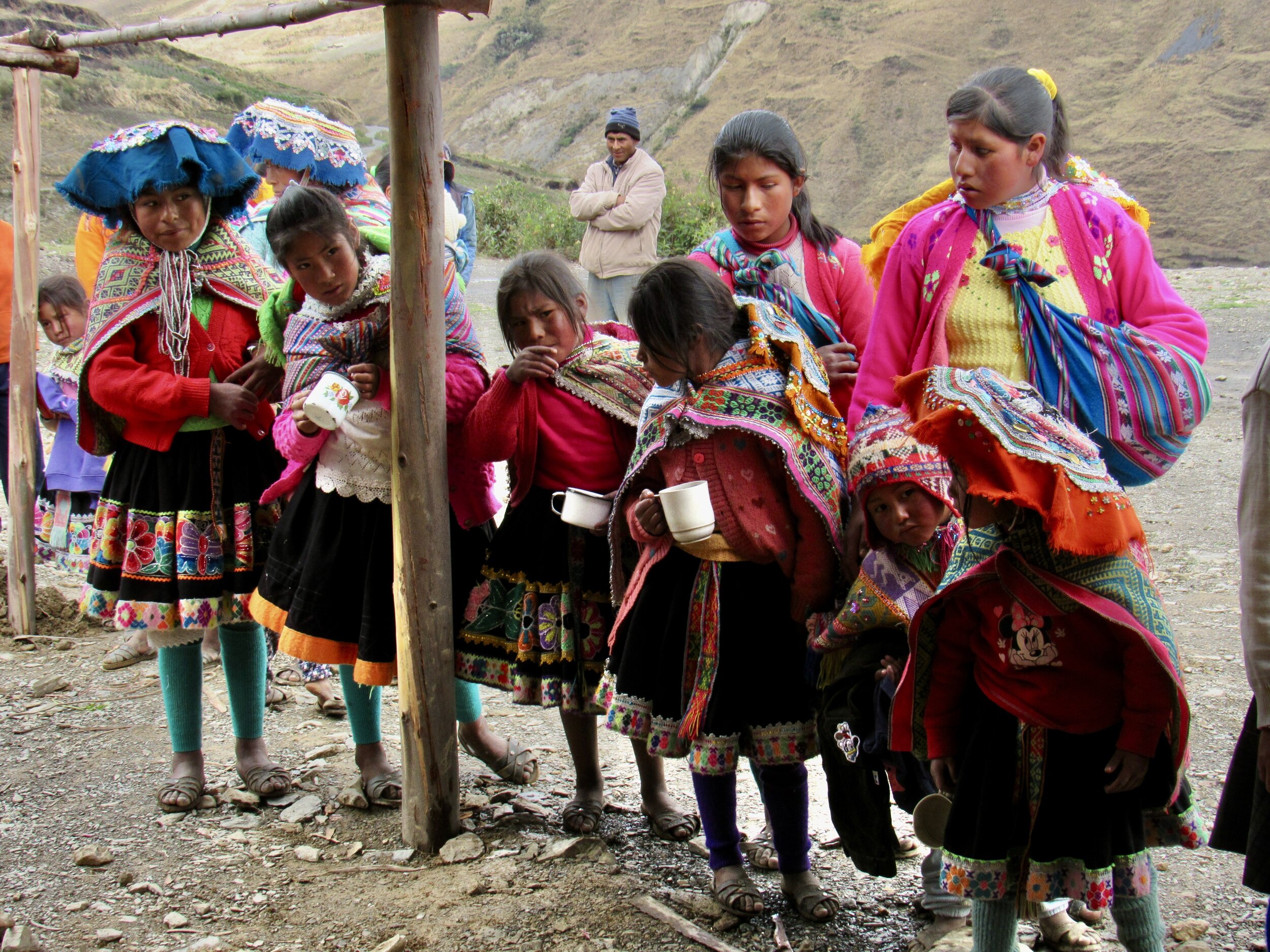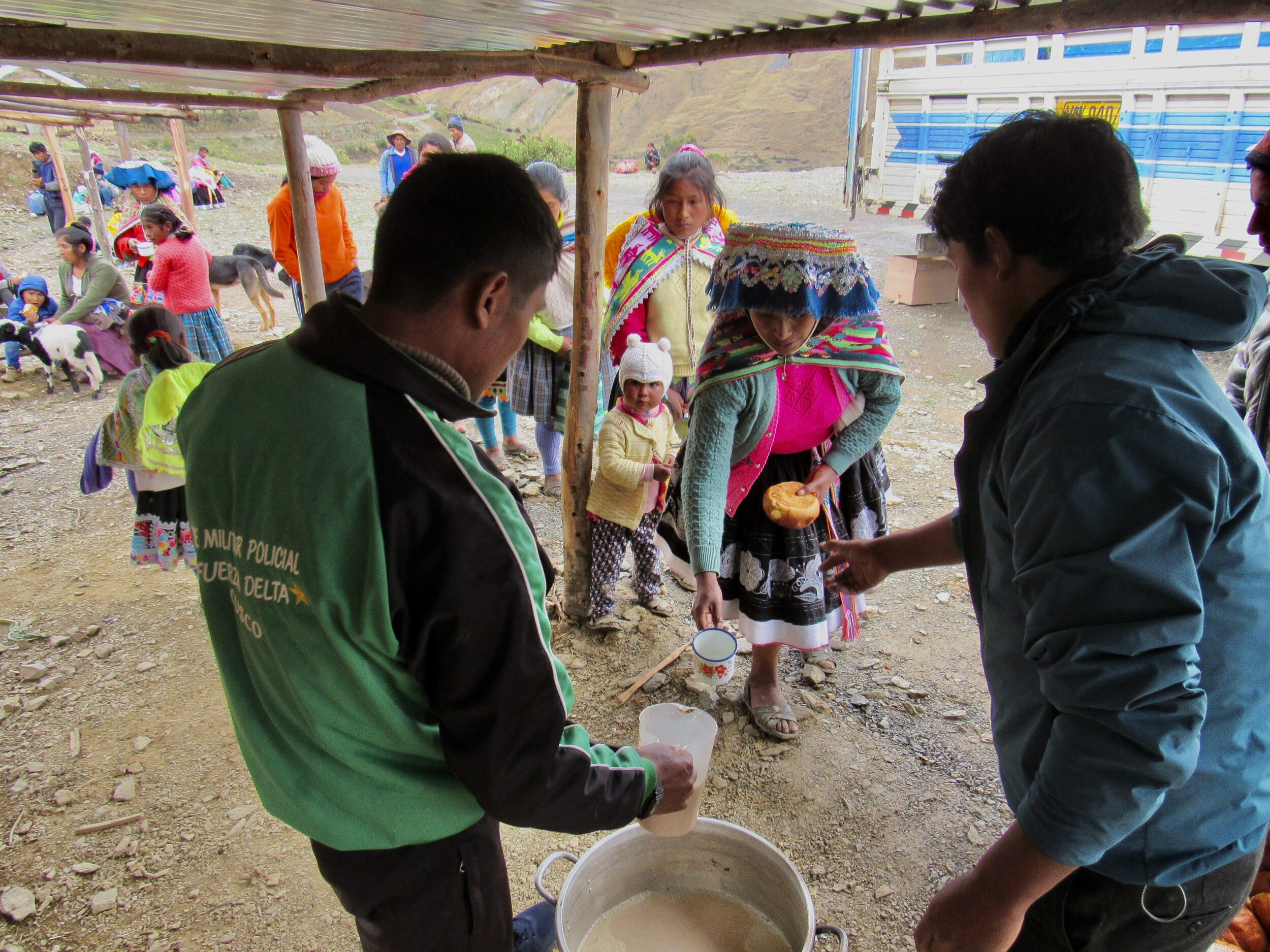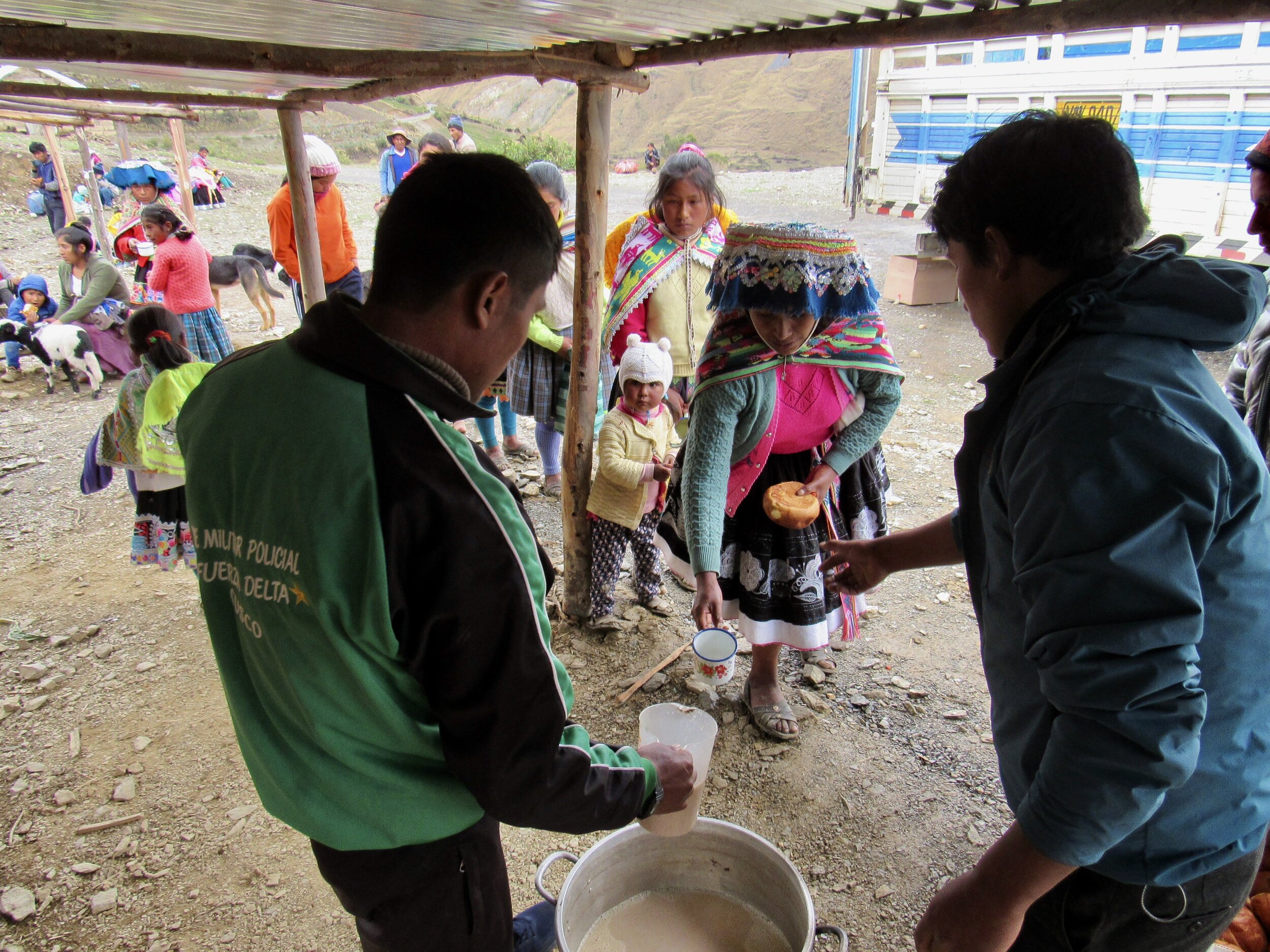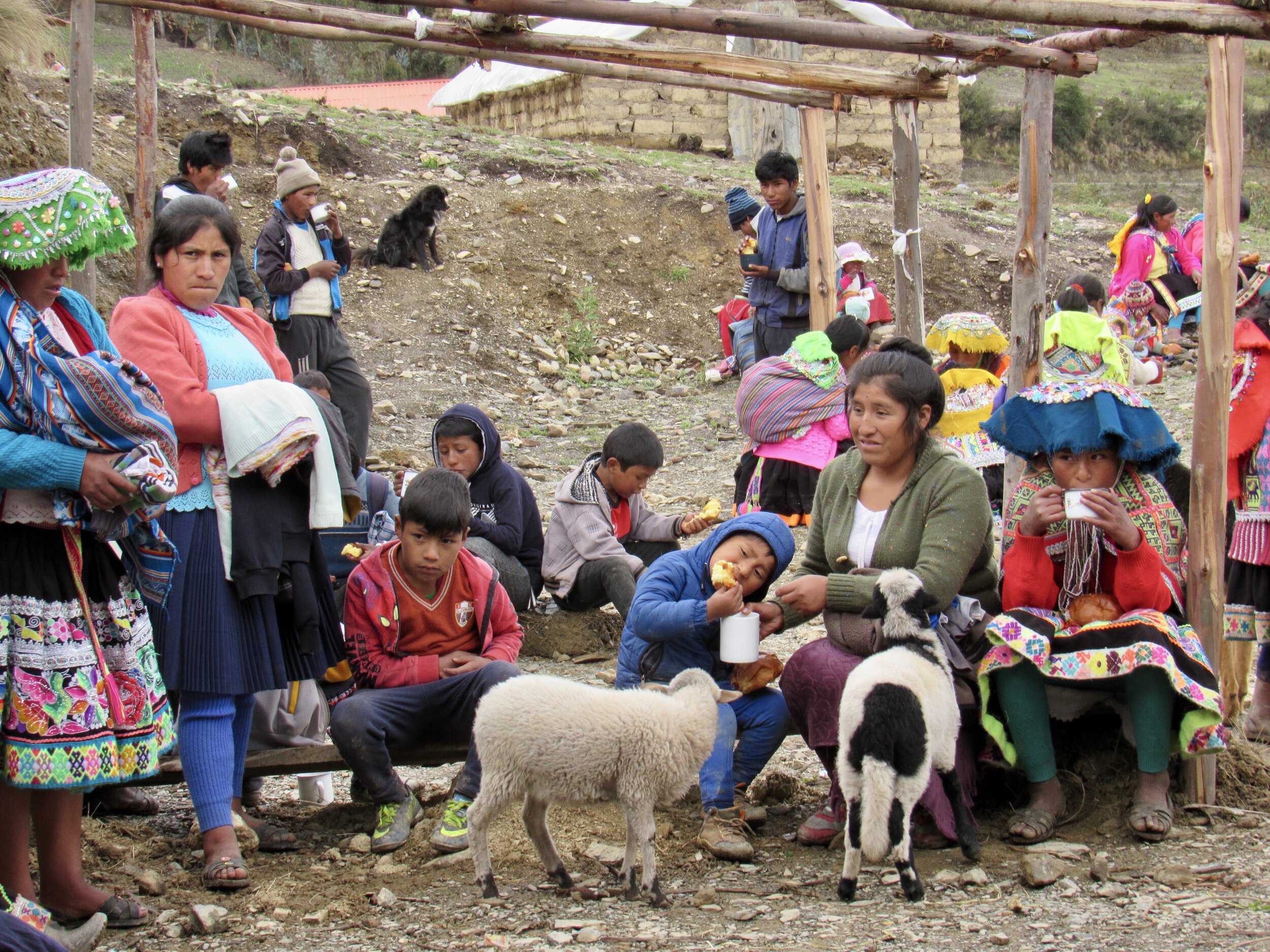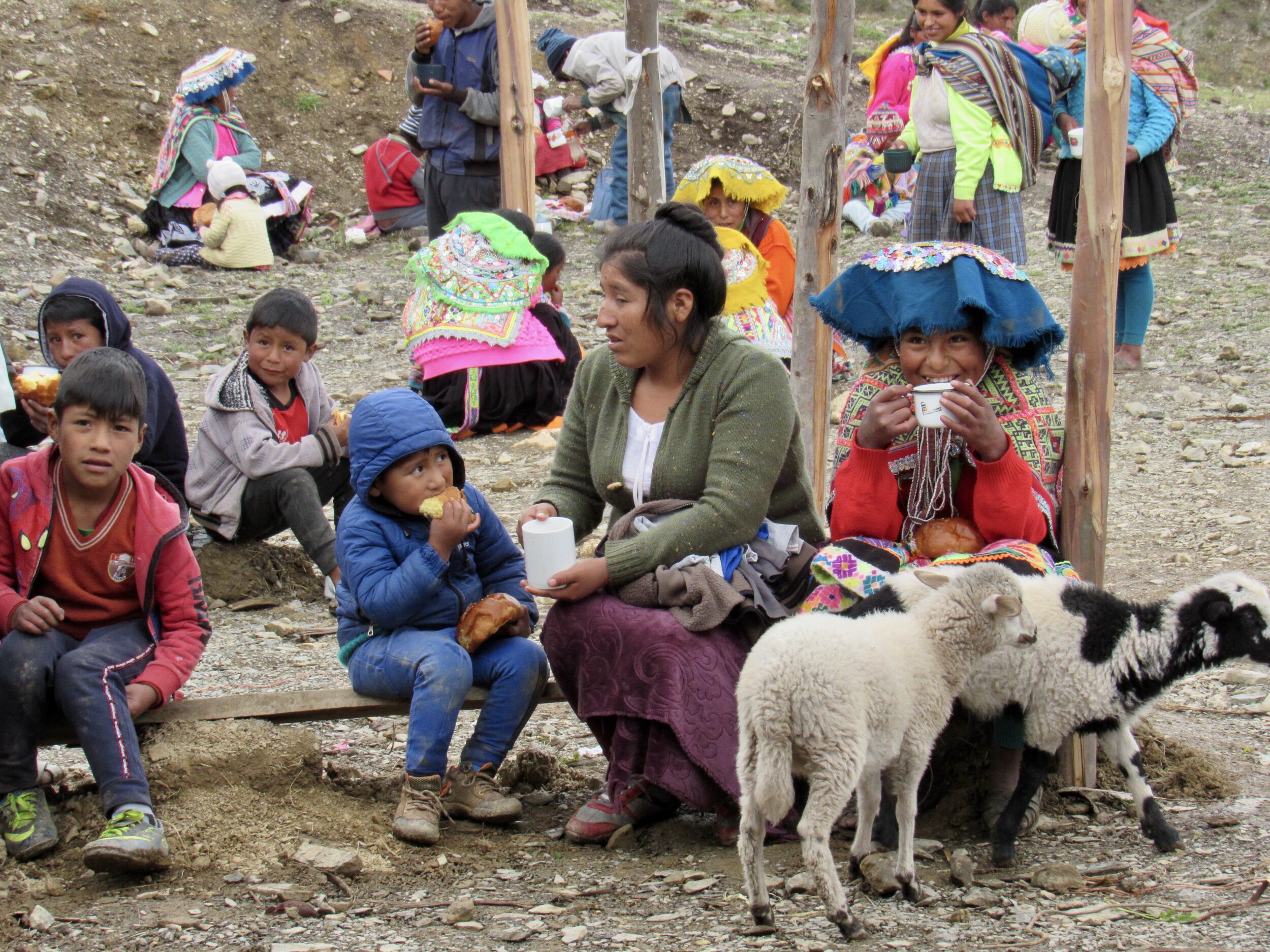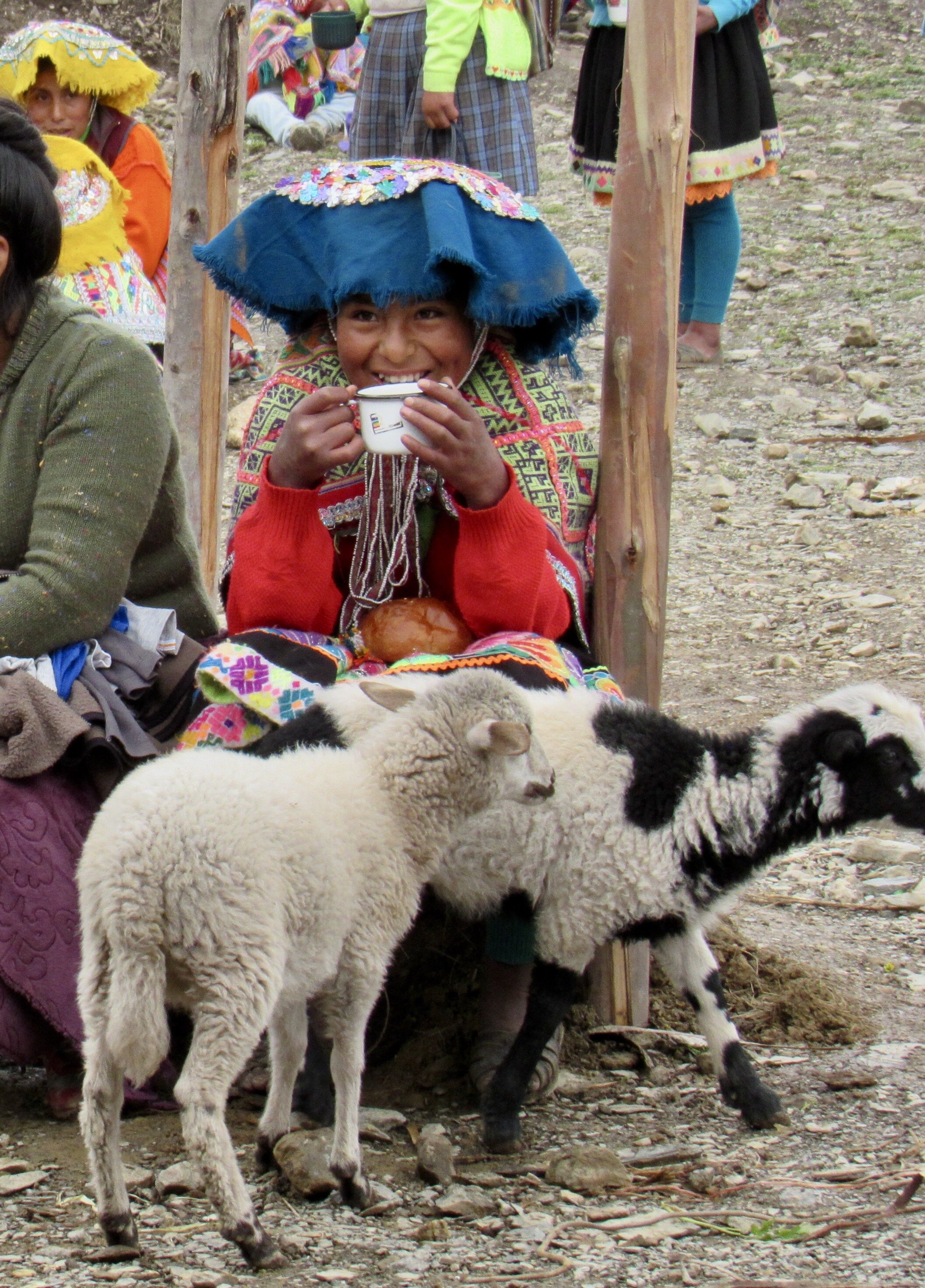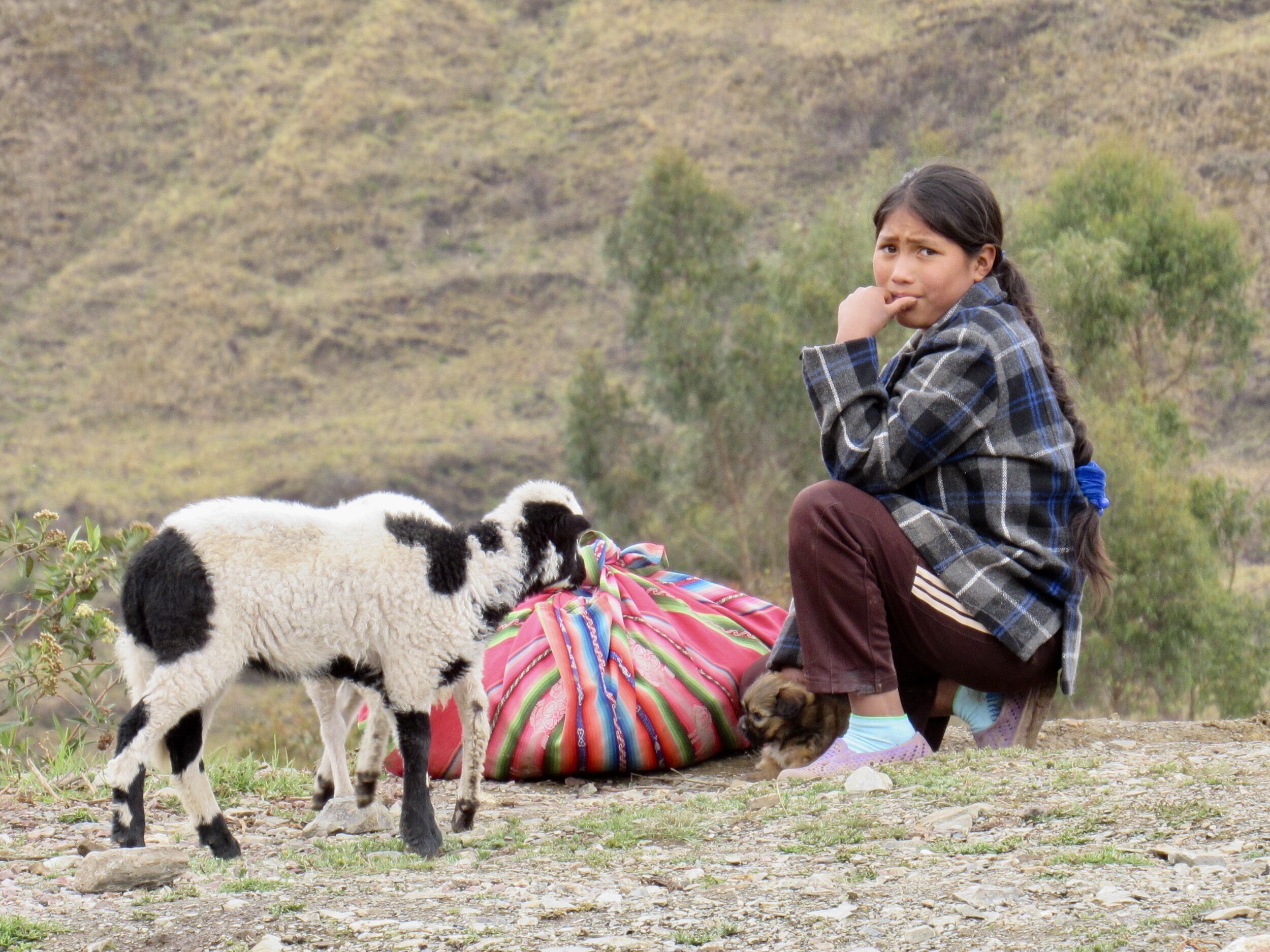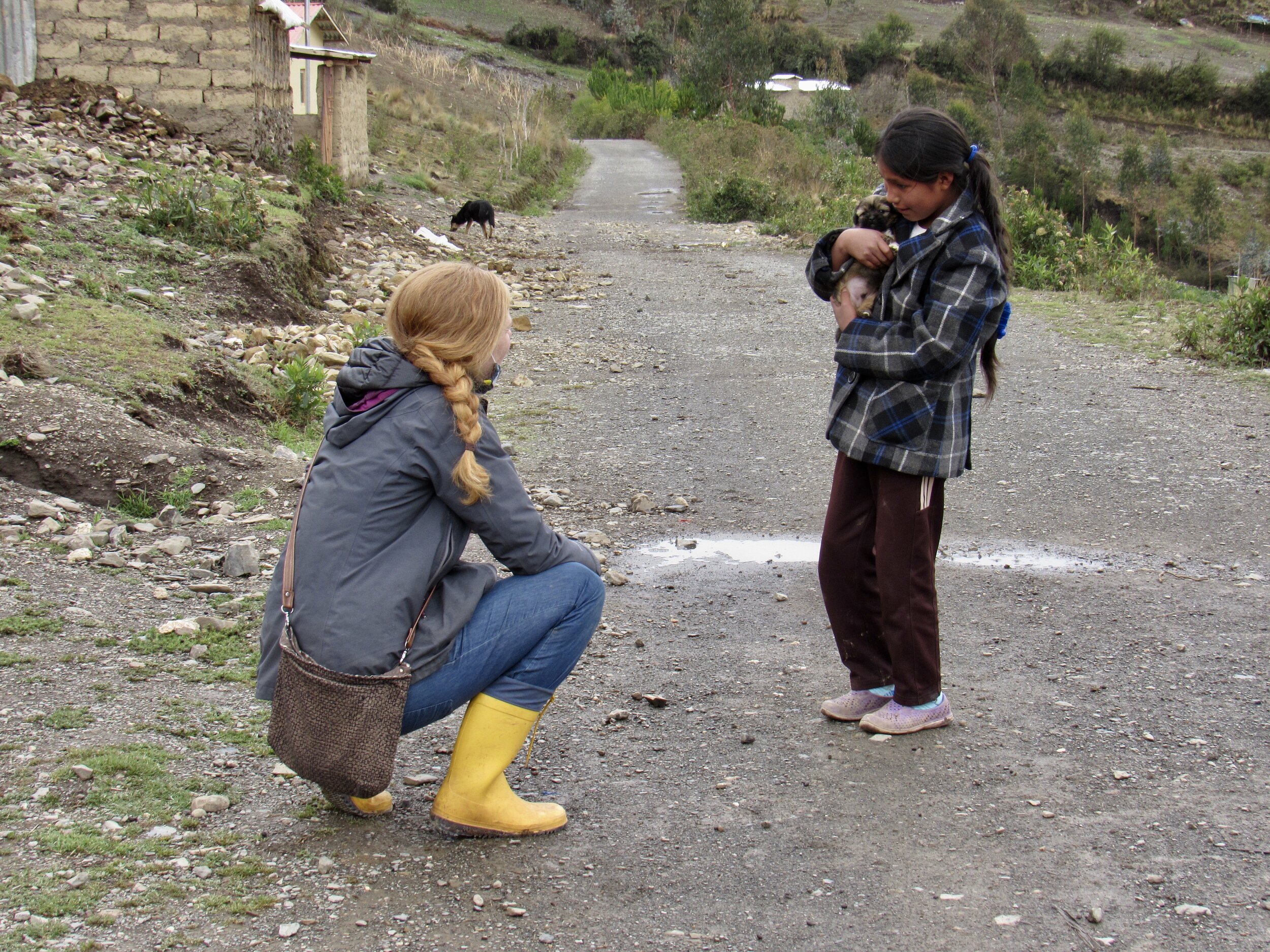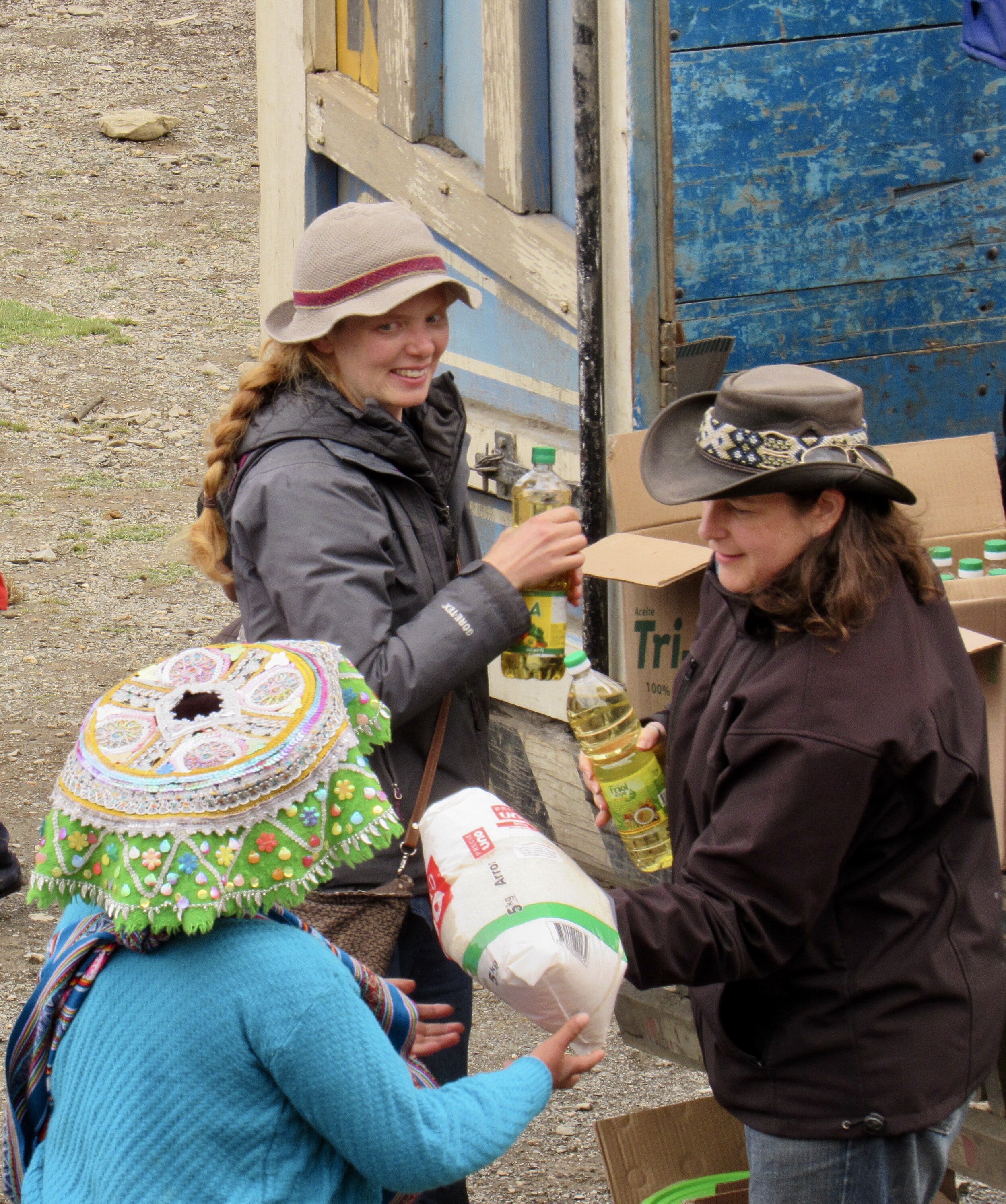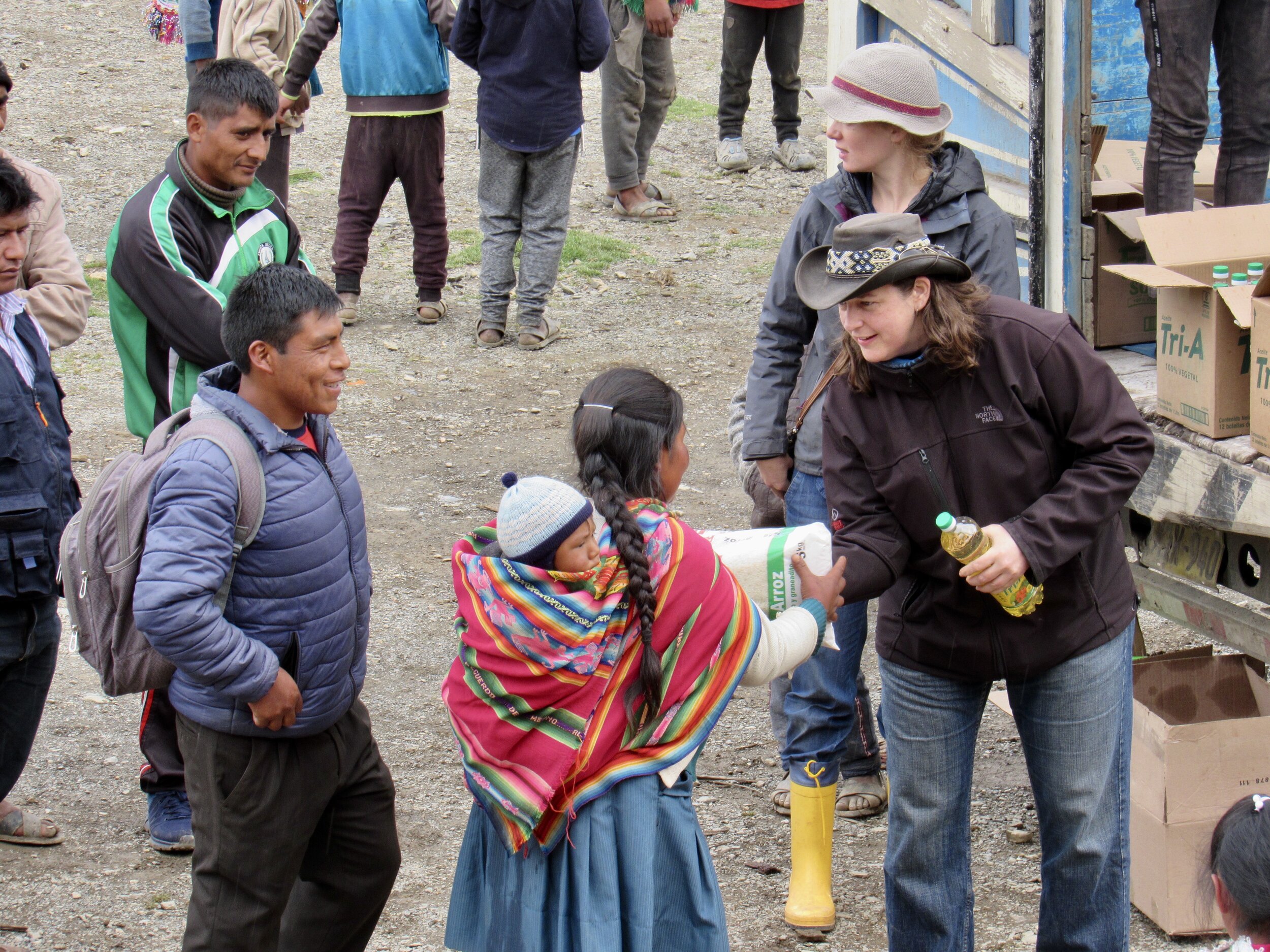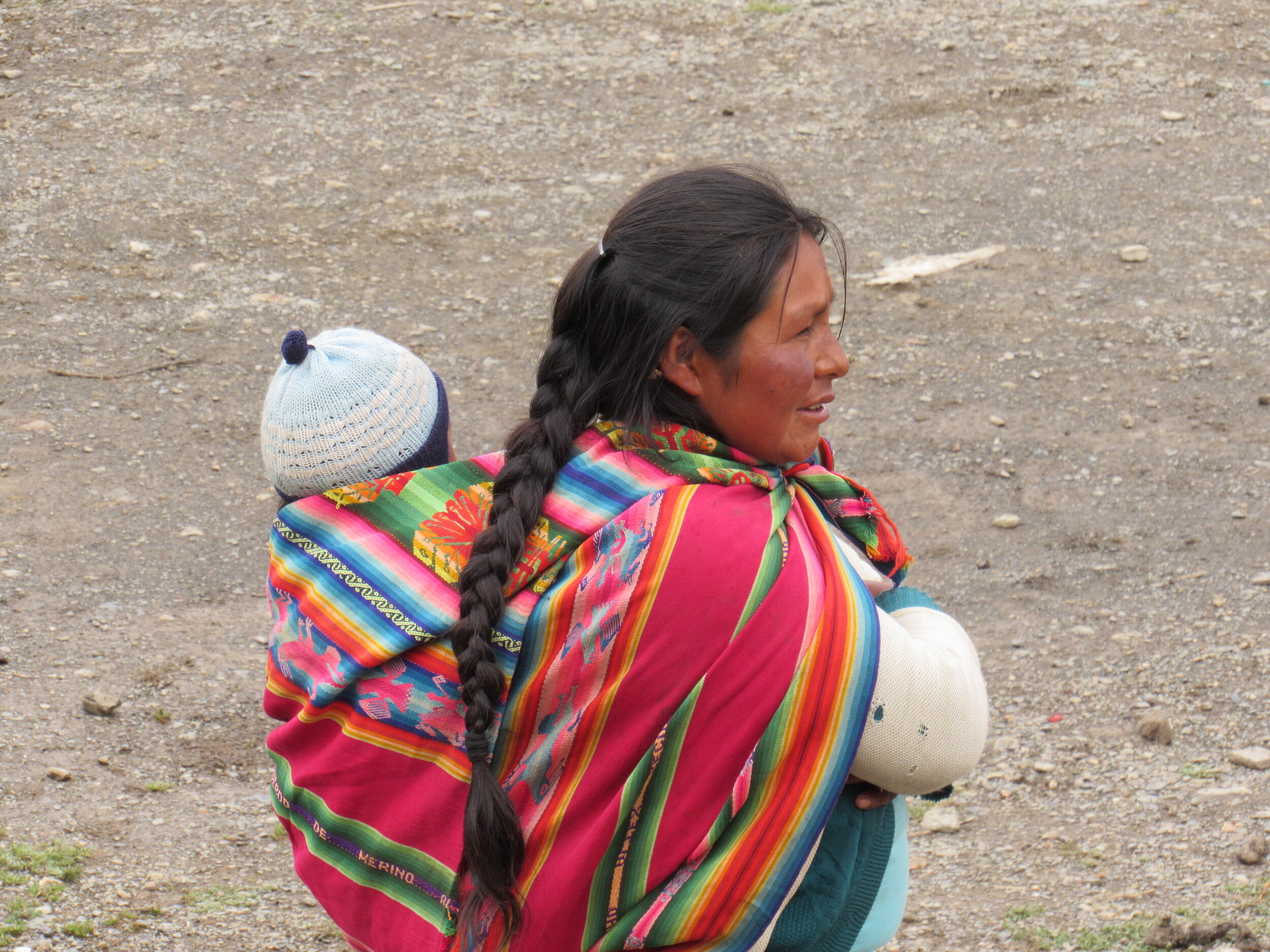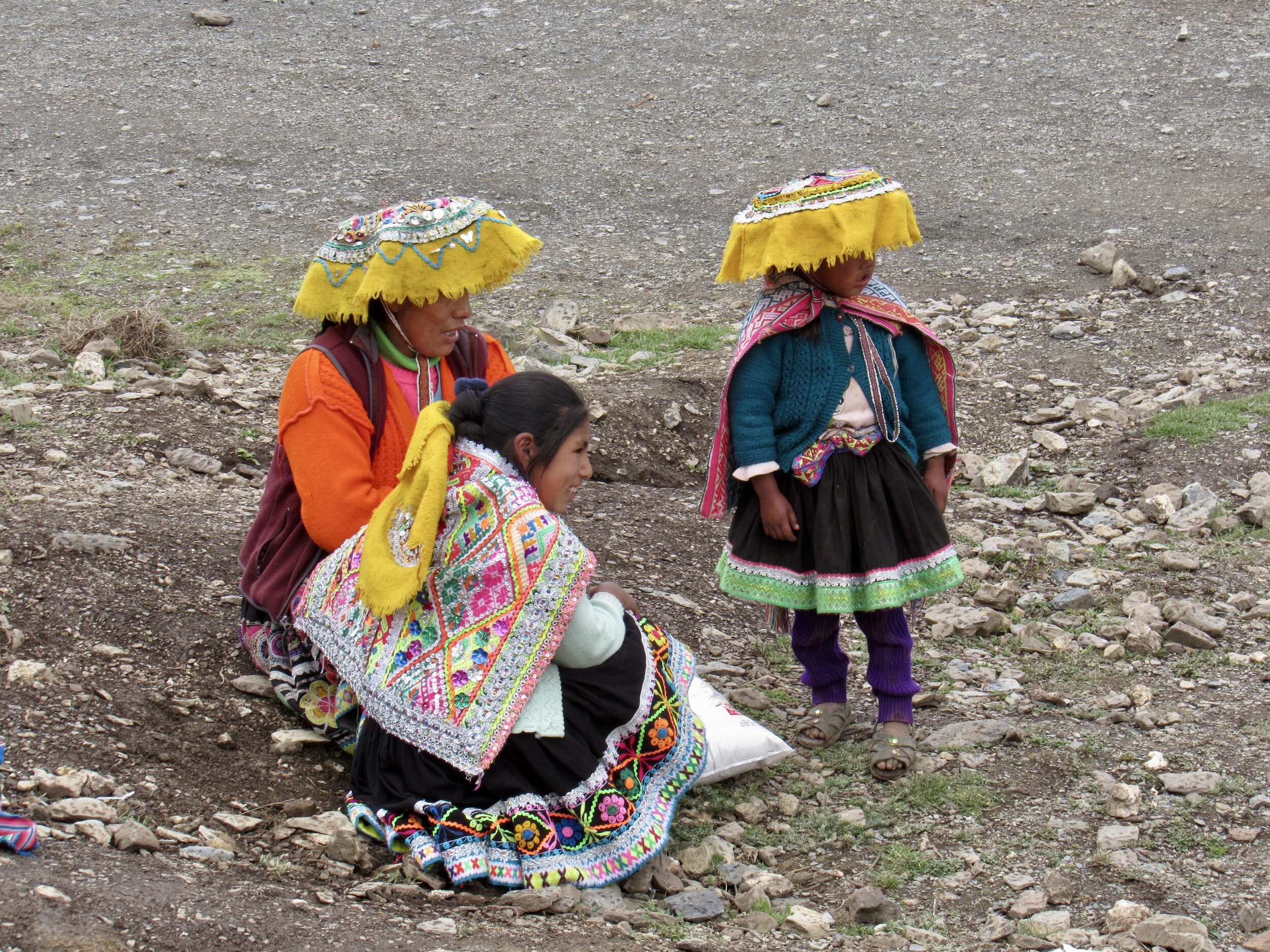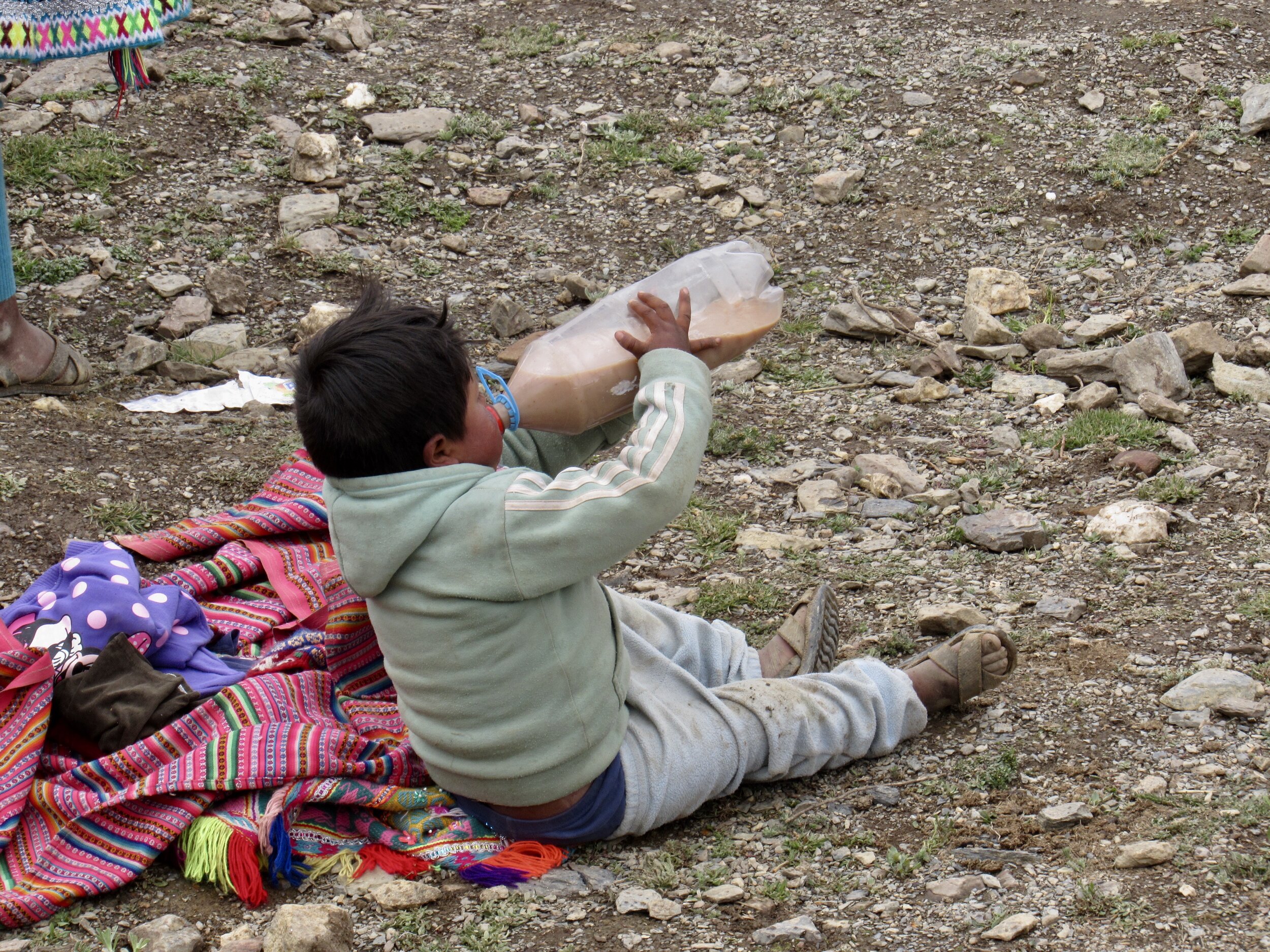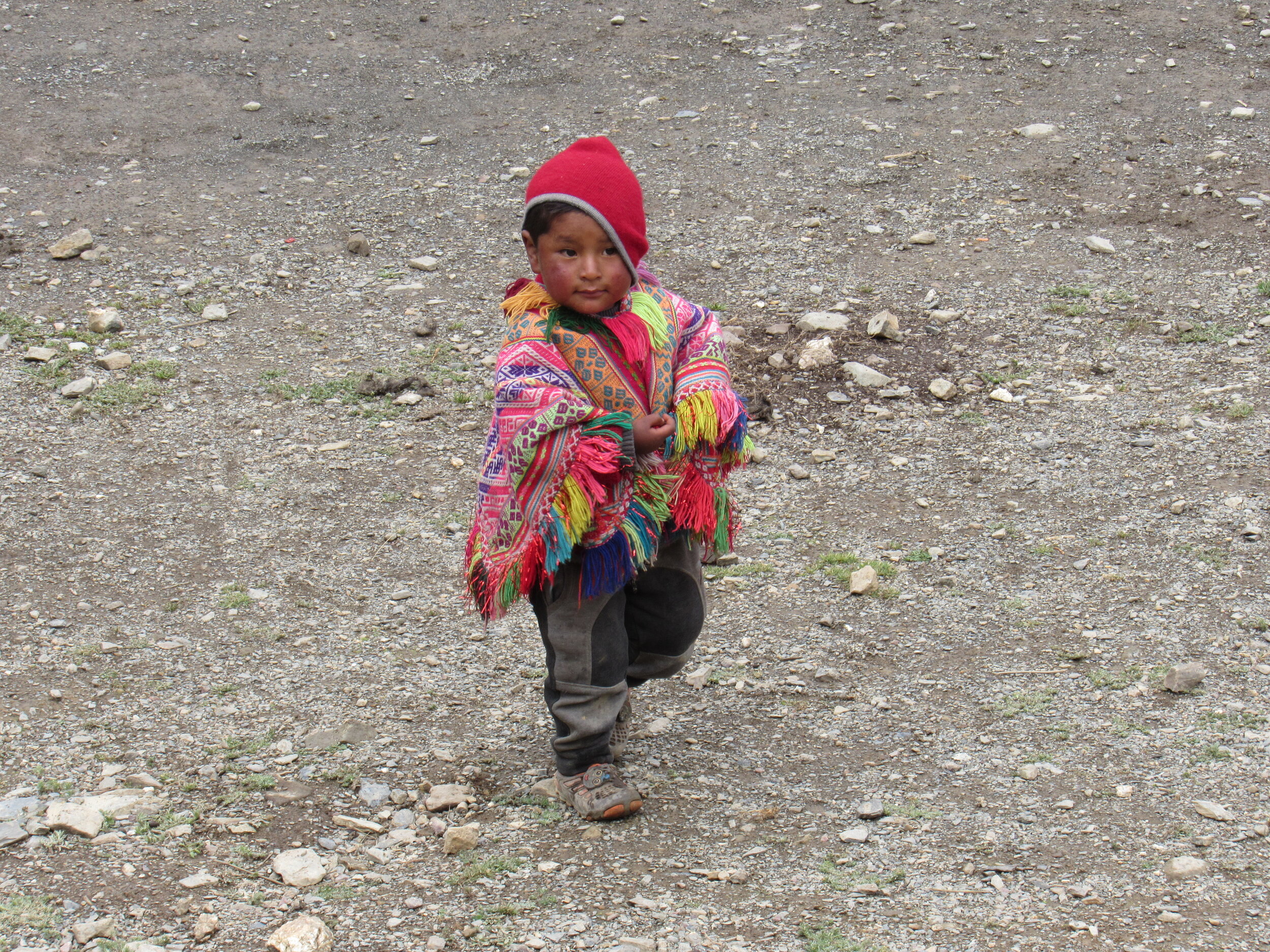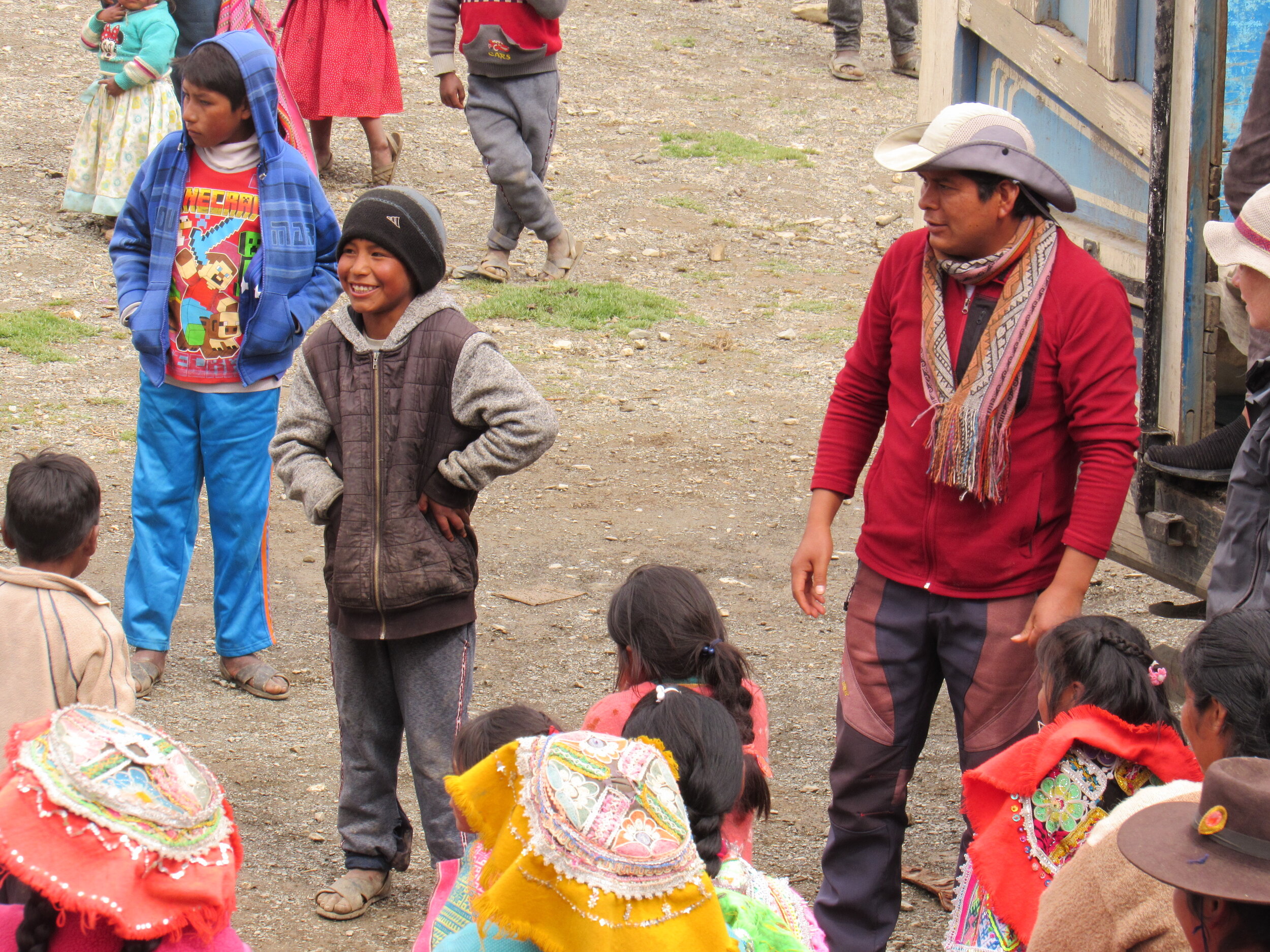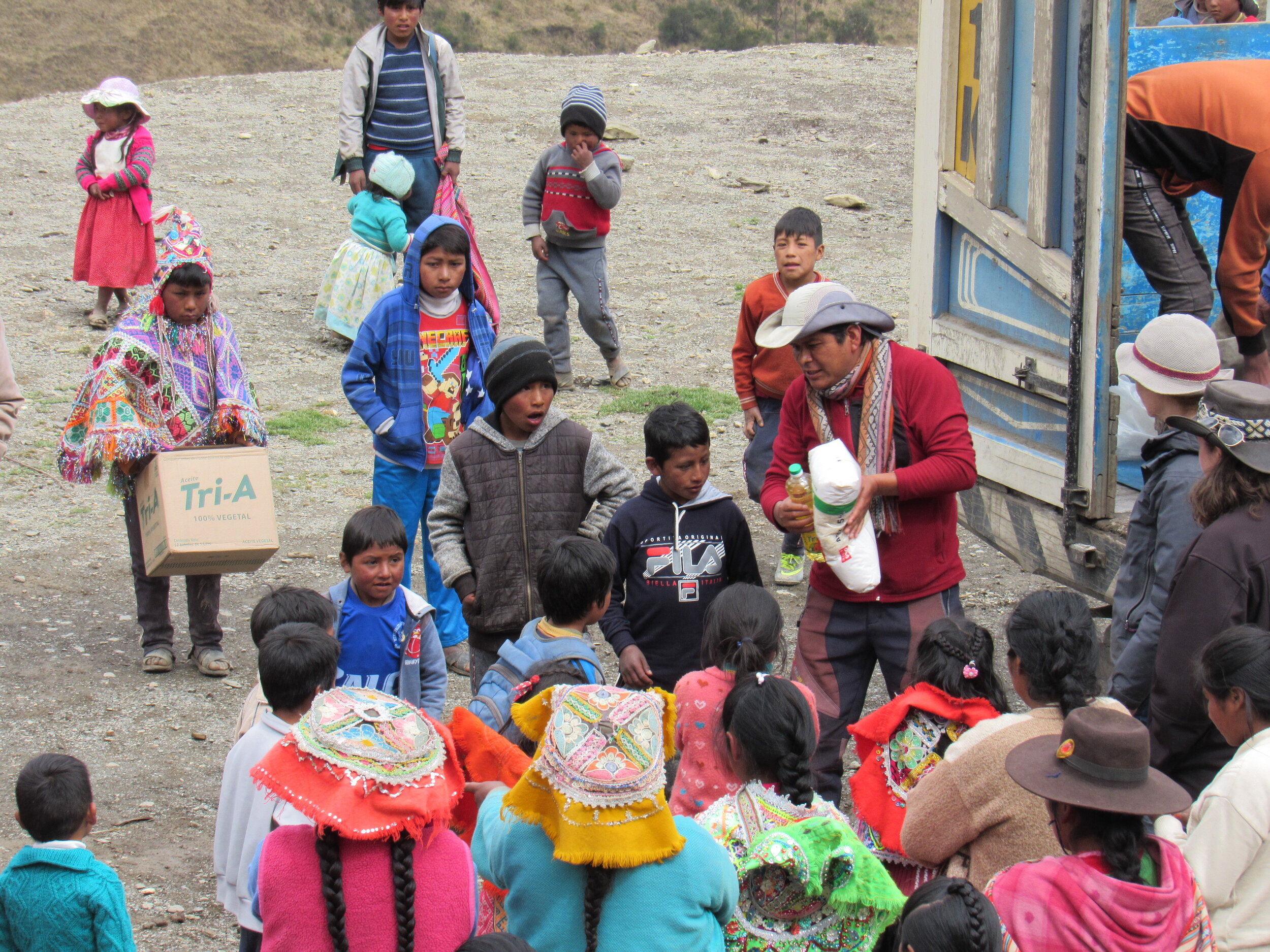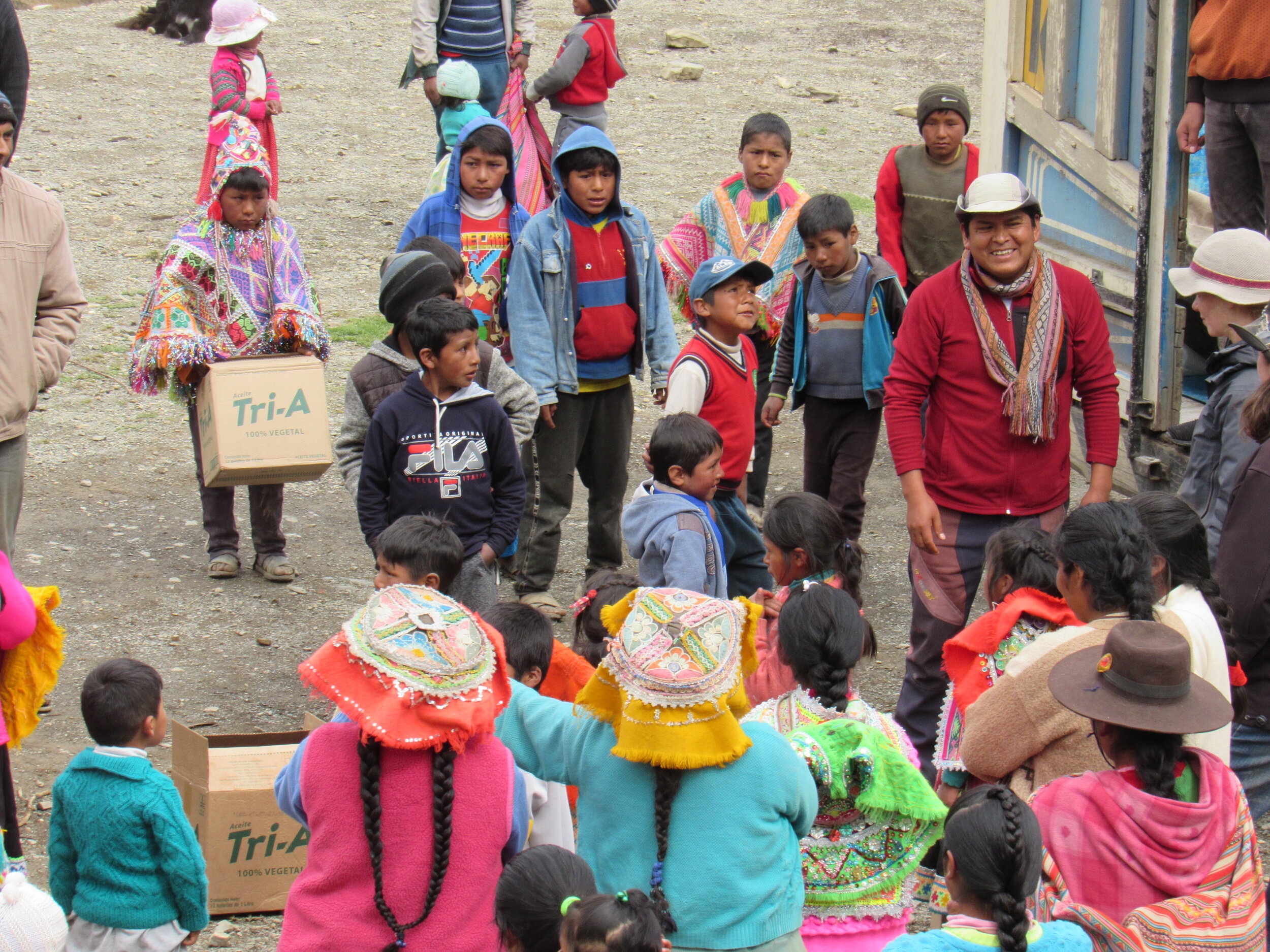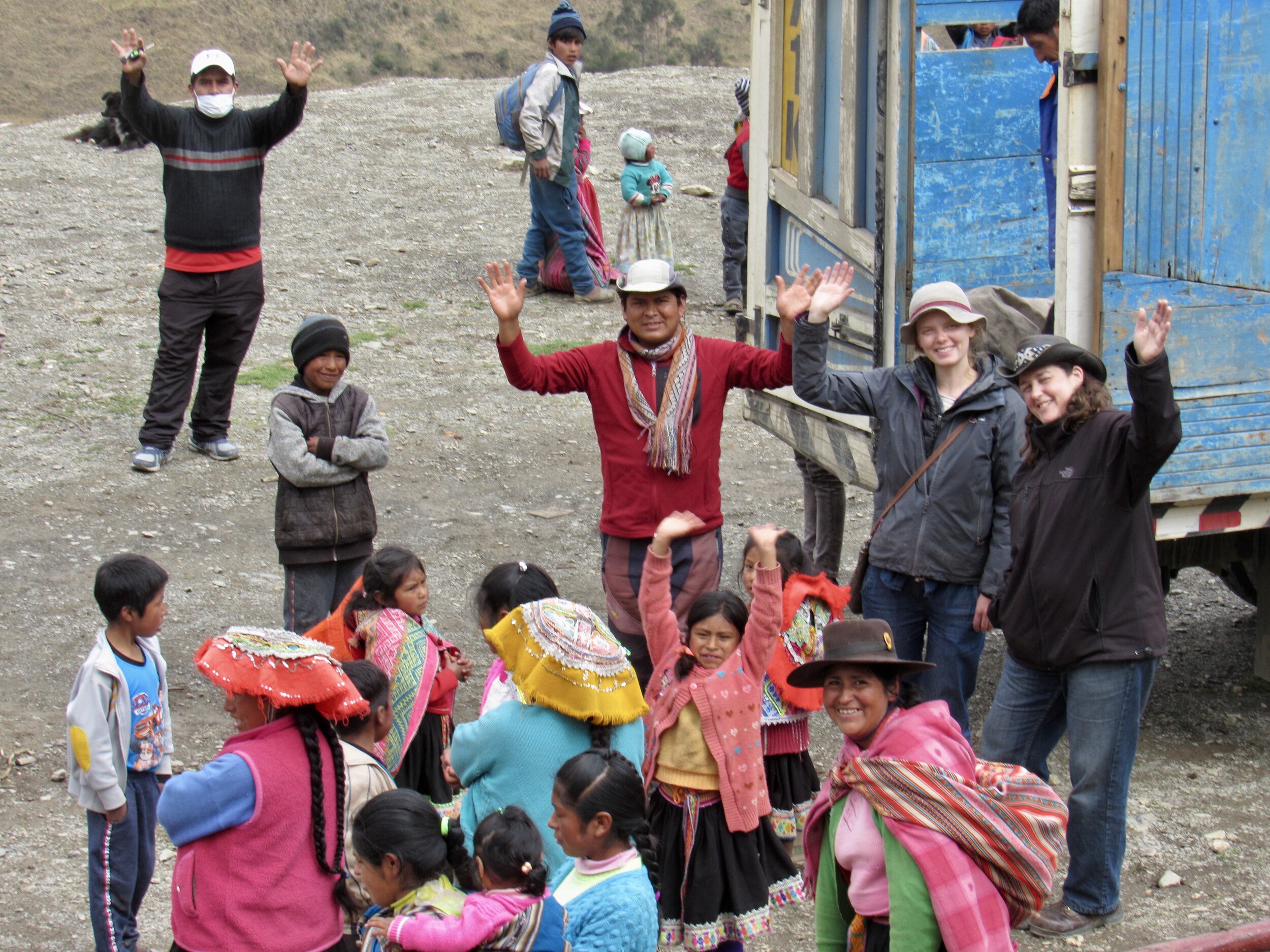Covid in Cusco: Week 38
Sunday, 29 November, 2020
I’m still so happy about last week’s trek around Mt. Ausangate! The mountains here are one of the biggest reasons that I wanted to move to Cusco. It’s really amazing to see how different the climate here is, depending on the altitude. When you get down below the altitude of Cusco, you realize that you’re really close to the equator. Even just going to Machu Picchu, which is only about three hours away, takes you into the cloud forest and the very edge of the Amazon rainforest.
When you head up into the mountains higher than Cusco, you are immediately in the high altitude ecosystem, where all plants are tiny and very few trees or crops can grow. I’ve always wondered why, and finally took the time to look it up. Part of the reason is that the air, which has less oxygen for us, also has less carbon dioxide for plants. They struggle to live for the same reason that we struggle to breathe: the air is just too thin.
My aunt sent me an article from yesterday’s Seattle Times about the effect of the pandemic on farmers in Peru. The farmers interviewed are in Pisac, which is only about an hour north of Cusco. The town of Pisac itself has suffered from the death of tourism, although lots of the expats who live in Cusco moved to Pisac to escape the high Covid case numbers in Cusco. Several people I know who moved there also said that the police are less strict in Pisac and that it’s easier for them to go for hikes in the surrounding hills.
The article says that part of what is hurting farmers is that prices for crops have dropped, leaving them with less income and sometimes unable to sell what they farmed. As I’ve learned through working on the Covid Relief Project, part of the reason for this is the disappearance of tourists. Normally, Cusco and the Sacred Valley welcome thousands of tourists every day. We used to have a steady stream of flights landing in Cusco, bringing people to fill the hotels, and more importantly for the farmers, the restaurants.
Restaurants in the Cusco region rely on local produce, which not only makes the food better, it supports thousands of families who farm small plots of land. Most of these plots are fields smaller than a city block. Peru’s Agrarian Reform of 1969 broke up the big landowners, most of whom had inherited their estates as descendents of Spanish families granted the land during colonization. The system had perpetuated a kind of serfdom that bordered on slavery, which I can still hardly believe lasted through the 1960s. One result of the Agrarian Reform is that the families who farmed and lived on the land actually became the landowners.
I met families who rely on farming near Pisac on July 11th, as one of the Covid Relief Project village visits to deliver emergency food assistance. We visited two small communities and at one got to hear from a community member who talked about how forgotten these families feel. He said that they work so hard to provide food for Peruvians, but that they don’t get any attention from the government. They don’t have a health clinic and their school hardly gets any funding. Unfortunately, this is the case of every community that I’ve gone to since we started the project.
Like most countries around the world, the poorest people in Peru are hit the hardest by the economic collapse caused by the pandemic. The World Bank estimates that the pandemic will push 49 million people into extreme poverty in 2020. It’s easy to feel helpless in the face of numbers like that, but I hope that what little I can do for rural families in the Cusco region does make a difference for them.
Monday, 30 November, 2020
After Black Friday, today is another day devoted in part to the celebration of corporate America: Cyber Monday. Of course, since both of these days are related to the Thanksgiving holiday weekend, they’re not really a thing outside of the US. However, I’ve been thinking of visiting my parents for my Dad’s birthday in February, which means that I’ve been shopping for plane tickets online.
Taking advantage of some Cyber Monday deals, I managed to buy flights from Cusco all the way to Boise and back for only about $600. In 2019, that was the price of the cheapest one way tickets. The pandemic’s effect on the airlines, while tragic for many of their employees, is definitely a big help for me.
I haven’t been back to the US since I left to move to Cusco, in August 2019. By the time I make it to Boise for Dad’s birthday, that will have been a year and a half in Peru. I’ve been away longer, when I was a Peace Corps Volunteer in Morocco 2005-2007, but since then have gone back every year, even when I was living in Turkey and Bangladesh.
I suspect that seeing Seattle and Boise during the pandemic will be a bit of a shock. Currently, the US is starting to see the effect of people gathering for Thanksgiving last week and the huge spike in Covid cases is predicted to get even worse in the coming weeks. I think that everybody expected there to be a spike in cases as a result of people trying to have a normal Thanksgiving. I bet that the consequences of Christmas and New Year will be similar.
For me, the question is, will case numbers be on the decline in February? Will the spike in cases from the holidays scare enough people into staying home? Will the Biden/Harris administration issue enough mandates to get the pandemic more under control before I arrive in Boise on February 19th? How bad will it be when I get there?
The other question is, can I keep myself from catching Covid as I navigate five airports? Between my apartment and my parent’s house are the Cusco, Lima, Mexico City, Seattle and Boise airports. From what I’ve ready, being on the airplane isn’t that dangerous because of how air is filtered. The danger will be in the airports. Can a mask and hand sanitizer keep me from getting Covid in all of those high-traffic areas?
Just like in August I was terrified of the idea of taking Covid to one of the isolated mountain villages that I was going to with the Covid Relief Project, I am now terrified of the idea of giving my Dad Covid for his birthday. I’ll be as careful as I can, not staying at my parents’ house and trying to find ways to visit them outside. The social distancing and visiting them while staying outside will definitely be a challenge in Boise in late February. The weather is likely to be horrible: wet and cold. I have just under three months to find as many ways as possible to minimize the possibility of giving my parents Covid.
Tuesday, 1 December, 2020
This morning I sent an email to everybody who has donated to the Covid Relief project. I’ve been planning a big fundraising campaign for today’s Giving Tuesday event. It turned out to be even better than I had hoped and we not only got the rest of what we needed for Ocongate, we also raised enough for two more communities! That means that this Saturday is our first chocolatada and we can do four, maybe even five more! I had already planned to do chocolatadas on every Saturday before Christmas, but now we can also add two Sundays: December 13th and the 20th.
A big part of the support I got today wasn’t actually from the people who had donated between May and August. It was from Andrea, whose family owns the Maytaq Wasin Boutique Hotel here in Cusco. One of her siblings sent $200 and two of her friends in the US each sent $800. I am still floored by the $800 donations. That is way, way, way more than I hoped to get and I’m so thankful for their generosity. Those two donations alone let me add December 13th and 20th to our chocolatada calendar.
One of those donations is from the Weisman family in Chicago. The other is from a woman who asked to mostly be anonymous, but said that I could list her as Maria Te, if I needed a name for the donation. She said that she had looked up what it would cost her to fly from her home in St. Louis, Missouri to Cusco and decided to match that $800 flight cost with a donation, since she wasn’t able to travel in 2020. The name Maria Te is the name that she was given at the orphanage in Cusco, from which she was adopted by a family from St. Louis.
Even more than the amount of her donation, the story really hit me. How amazing is it that she is able to give so much to families here? I couldn’t find the right words for my thank you email to her. How can I be profuse enough? How can I actually thank her for what this will mean here? I will definitely be sending her lots of photos of the little girls in the community where we take her donation.
Today I also got to speak with students at a school I used to work at, thanks to former colleague Ernesto. He teaches Spanish and has been talking about the Quechua language and indigenous people from the Andes in two of his classes. I asked Auqui to participate with me, as a native speaker of Quechua and indigenous person from the Andes. The kids had sent us questions ahead of time, so we were prepared for most of them.
I liked how Ernesto had set the class up for each student to ask us a question. They asked all kinds of things about the Quechua language, who speaks it and why it’s dying out. We told them how little the government was doing to support the language and the people who still speak Quechua. We also told them about the strong connection between the language and the land. Communities where people have stopped speaking Quechua are more likely to allow mining on their land and other forms of environmental degradation. (This is anecdotal, not based on any research that I’m aware of).
Auqui was impressed that the students already knew a fair amount the Quechua language and how it is already dying out. Auqui told them that when he was a kid, he could walk out his door and hear everybody around him speaking Quechua. By the time he was a teenager, it had already changed to Spanish. I suggested to the students that the advances in education, starting in the 1990s, had made a huge difference. There was a big effort to decrease illiteracy and improve access to education for all children in Peru, especially those high in the mountains who had previously had no schools within walking distance.
Unfortunately, this push in education was purely in Spanish. Kids have to learn Spanish to understand their history, math and science classes. There was no comparable push for kids to be able to learn in Quechua, even if that was the only language that they already spoke. Obviously, there was no effort to teach Quechua or even try to preserve the language. As a result, most Peruvians my age speak very little Quechua, though some understand it. Younger Peruvians likely don’t understand a word their grandparents say.
It’s the sort of problem that will take massive governmental support to change. Waiting another ten years might be too little, too late. Considering the current need for governments all around the world to battle a pandemic and economic collapse, I don’t see the Peruvian government taking the necessary steps anytime soon. I hope I’m wrong about that.
Wednesday, 2 December, 2020
Thinking more about yesterday’s conferences with the students in Seattle, and on the connection with nature that is such a strong part of Quechua culture, I read a few articles today about where we’re at in our destruction of the environment. We all know that climate change has a terrible effect on the ecosystems that we’ve known over the past few decades. We all know that humans are creating farmland and building on what used to be habitat for a variety of flora and fauna. We’ve all also seen the news about how quickly that same flora and fauna bounced back in April when people around the world stayed home in quarantine and left that habitat alone.
I was so optimistic in April! I was so sure that with such clear evidence of what we have to do to reduce or even reverse some of our impact on nature, that people around the world would insist that their governments step up their efforts to reduce and reverse that impact. I was so sure that this was the final kick in the rear that humanity needed to wake up and commit to changing the way we treat the environment. So far, I’ve been disappointed.
In a speech today UN Secretary General Antonio Guterres admonished all of us “Humanity is waging a war on nature. This is suicidal.” I couldn’t agree more. We’re not going to kill every other species on the planet, but the more we do kill, the more likely it will be that humanity won’t survive. Those of us who do survive this suicidal war probably won’t like the planet that’s left to live on. Of course, Guterres, like David Attenborough, are careful to point out that it’s not too late to reverse our course. We can still make sweeping changes and restore some of the places that we’ve damaged most.
Guterres reminds us: "Nature feeds us, clothes us, quenches our thirst, generates our oxygen, shapes our culture and our faiths and forges our very identity. 2020 was to have been a 'super year' for nature. The pandemic has had other plans for us. Now we must use 2021 to address our planetary emergency."
Maybe I should spend more time this December looking for a way to be a bigger part of that effort. What can I do in 2021 to address our planetary emergency?
HJK is open!
I am so excited for my friend Hannah, who has opened a beautiful shop on one of the most scenic streets in Cusco. The alpaca sweaters that she sells are some of the best in Cusco, and certainly some of the most ethically produced as well.
Thursday, 3 December, 2020
Today my friend Hannah had her grand opening for her new shop! She opened about two weeks ago, but wasn’t ready to host an event on that first day. Hannah and several of her friends here in Cusco are trying to change the fashion industry. Or maybe they’re creating an alternative to the established fashion industry.
They’re making a point to use natural fibers, since synthetics have a terrible impact on the environment. They’re also employing women, which can make huge changes in how local economies and families develop. When people have a sustainable income, and can focus on more than trying to keep a roof over their heads and food on the table, they will have the time and energy to care about their impact on the environment. As we’re seeing all around the world, people in desperate situations will focus on only the ends, justifying the means however they can. UN Secretary General Guterres pointed out yesterday that we have all been so focused on the pandemic that we have not met any of the global goals for the environment in 2020.
We really have to change that. I hope that increasingly, entrepreneurs like Hannah will put the environment at the top of their list of priorities in creating new businesses. Of course, we still need to pressure existing companies to do the same.
Friday, 4 December, 2020
I’m so excited that tomorrow is our first chocolatada! Today we got the 5kg bags of rice and bottles of vegetable oil delivered to the Maytaq Wasin Hotel, which has become our staging ground for all of the Covid Relief Project operations. We also took all the bags of clothes that we bought last Saturday to the hotel, where we opened several bags and organized them into bags of baby clothes, little kid clothes and big kid clothes. It’s a rough estimate, but we’ll have to rely on volunteers from each community to help with the actual clothes distribution.
While Auqui, Henry and I were sorting through the clothes for tomorrow, Sonia was helping Andrea put together kits for next Saturday. Tomorrow we’re going to see families from five “microcuenca” in the mountains about two hours from Calca and next Saturday Andrea and Sonia will join us going to Mayubamba. The kits they’re making contain donated towels and soap from the hotel, plus toothpaste and toothbrushes that Andrea bought with money that she had raised for us.
We are planning for about twice as many families tomorrow as we will see in Mayubamba, so unfortunately we can’t take the same kits with us to Calca. What we do have are the children’s clothes, 5kg bags of rice, vegetable oil and all of the ingredients for the traditional chocolatada. I’ve never made hot chocolate in the kind of quantity that takes ten liters of milk, four kilos of pure cacao, two kilos of sugar, a cinnamon stick about two feet long and a whole cup of cloves. The communities have been instructed to have a huge pot of boiling water ready when we arrive (I’m picturing a Halloween witch’s cauldron) and for everybody to bring their own cup.
Not only does asking people to bring their own cup save us from buying and making trash of hundreds of paper cups, it’s probably also better in terms of minimizing possible Covid spread. I’m always worried about the possibility of taking the virus from Cusco, where we have thousands of cases, to these isolated mountain communities that don’t have any. As I’ve written before, part of my worry is the actual virus spread, and part of my worry is that these communities don’t have any access to healthcare. They don’t have doctors or nurses or clinics or hospitals or even pharmacies. Many of them don’t have electricity or plumbing in their one room adobe houses. I try not to dwell on how devastating it would be.
Instead, I’m congratulating Henry & Auqui for finding the solution to my last logistics problem: the milk. We bought 16 kilos of pure cacao, 50 kilos of sugar, a kilo of giant cinnamon sticks and a kilo of cloves for the first three, maybe four chocolatadas. I didn’t want to buy dozens of 1 liter tetra paks of ultra-pasturized milk and certainly not cans of condensed milk. For Henry & Auqui to find a dairy who will sell us fresh milk solves all of those problems. We’ll transport the milk in reusable buckets, so there is no waste. Fresh milk is also much more nutritious and we’re supporting a local farmer. Win, win, win!
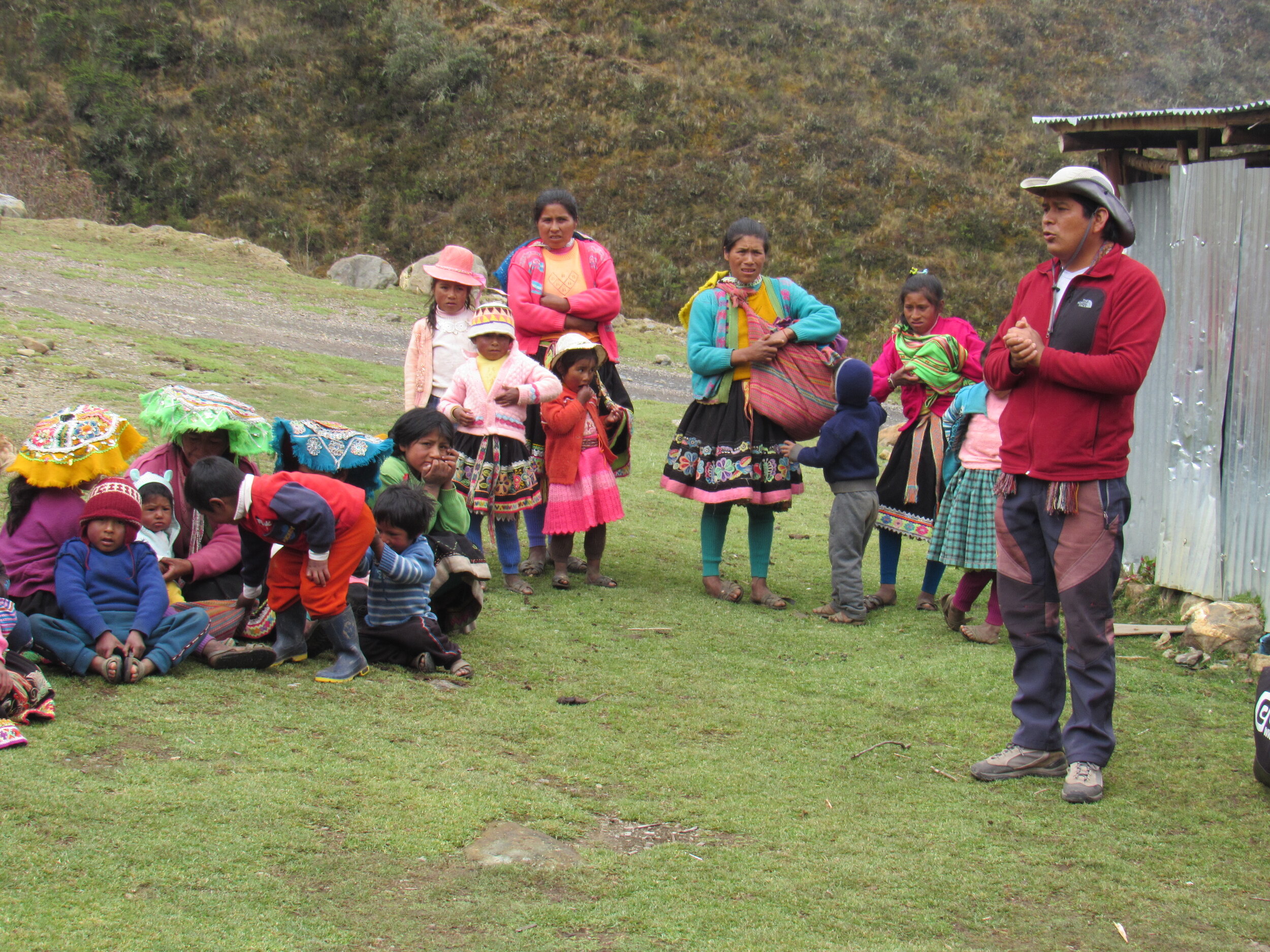
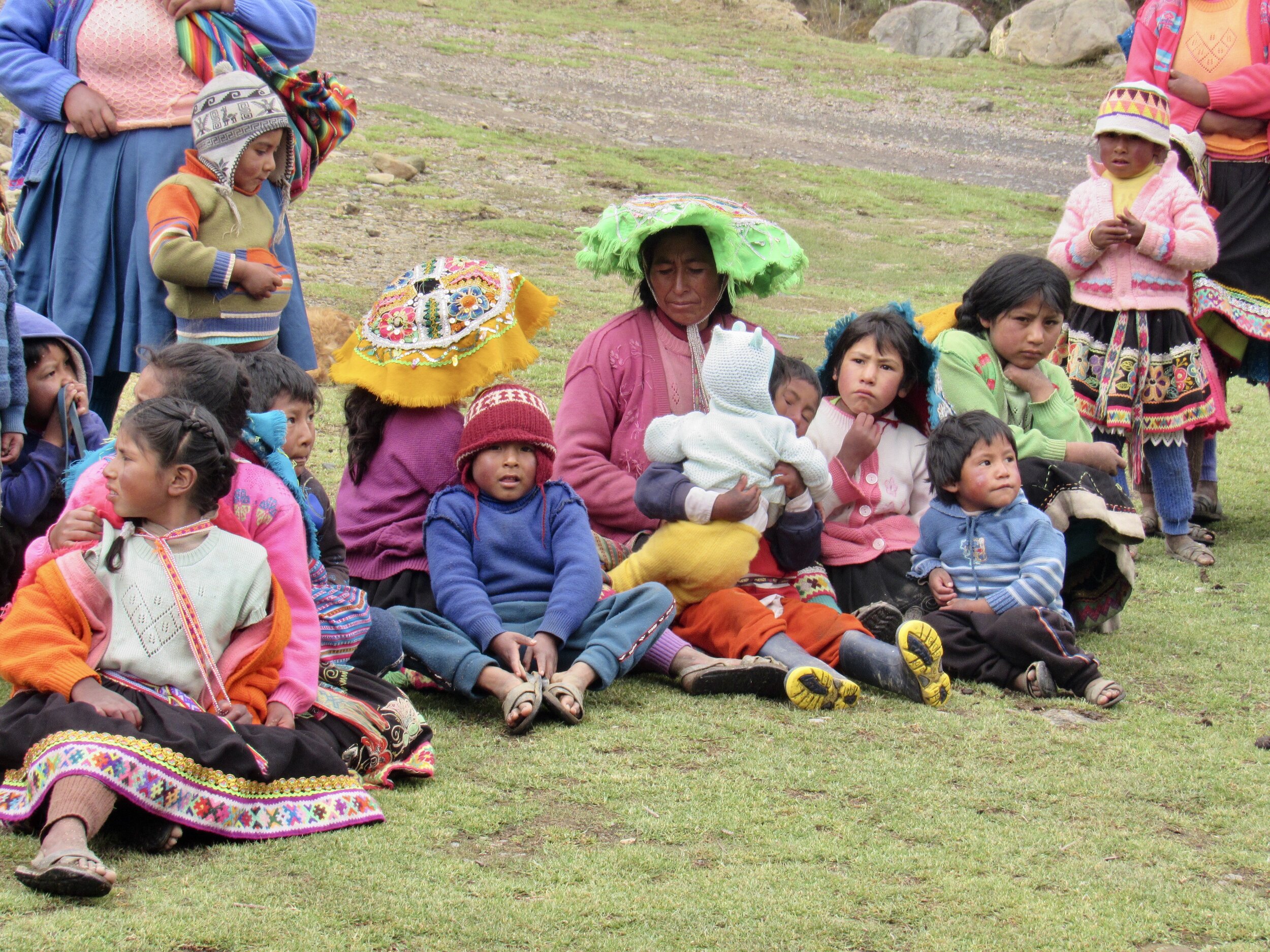
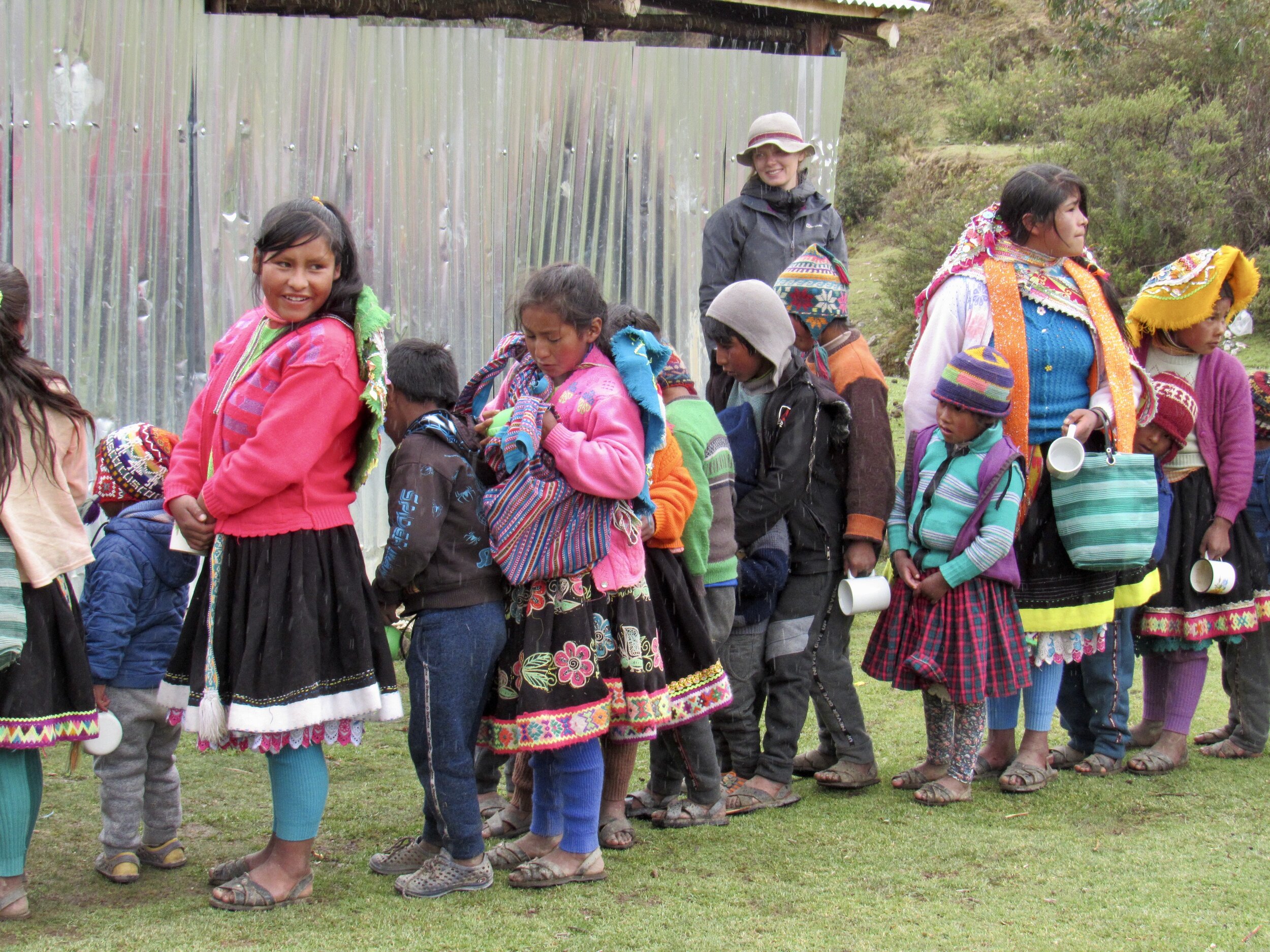
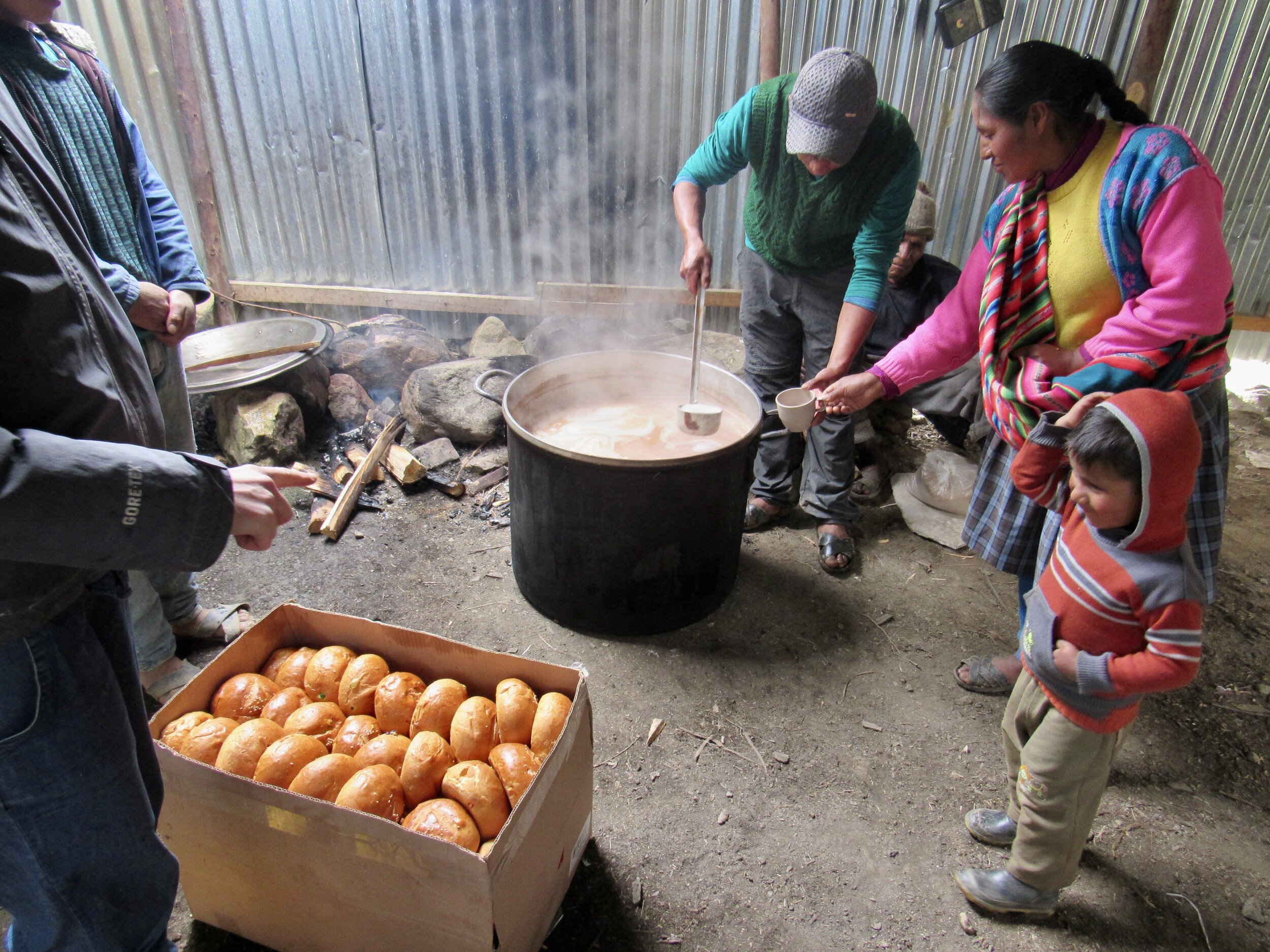
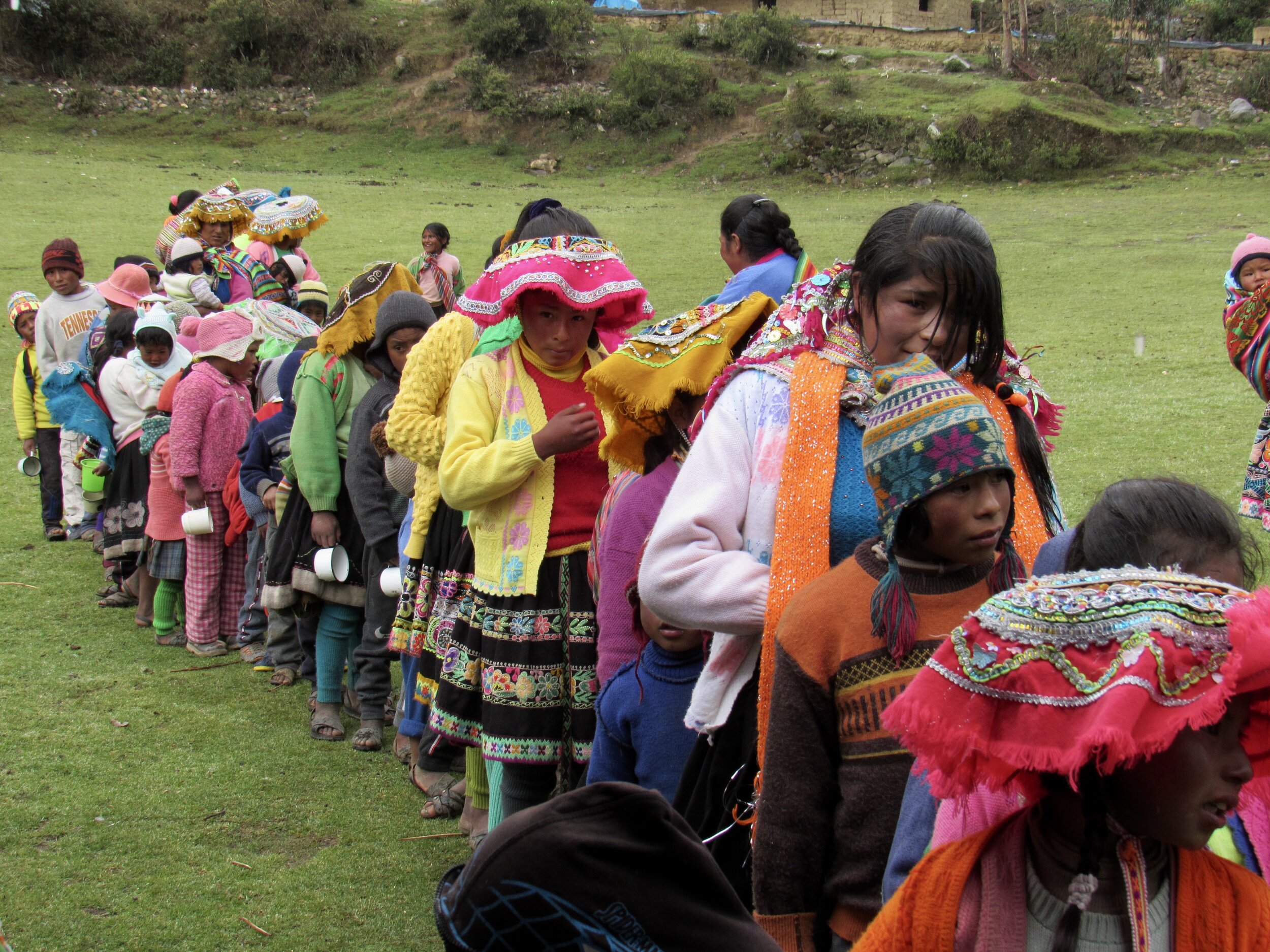
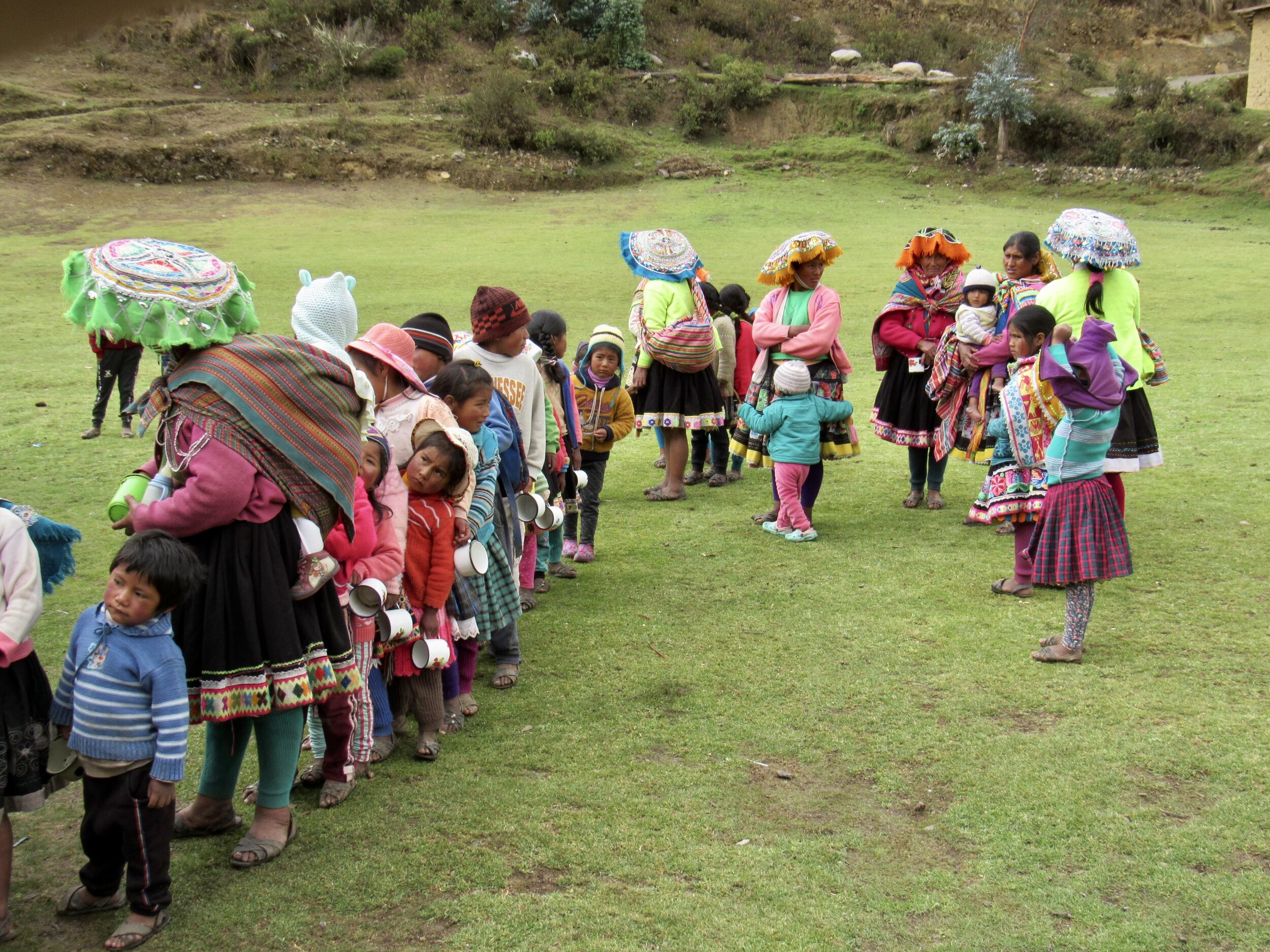
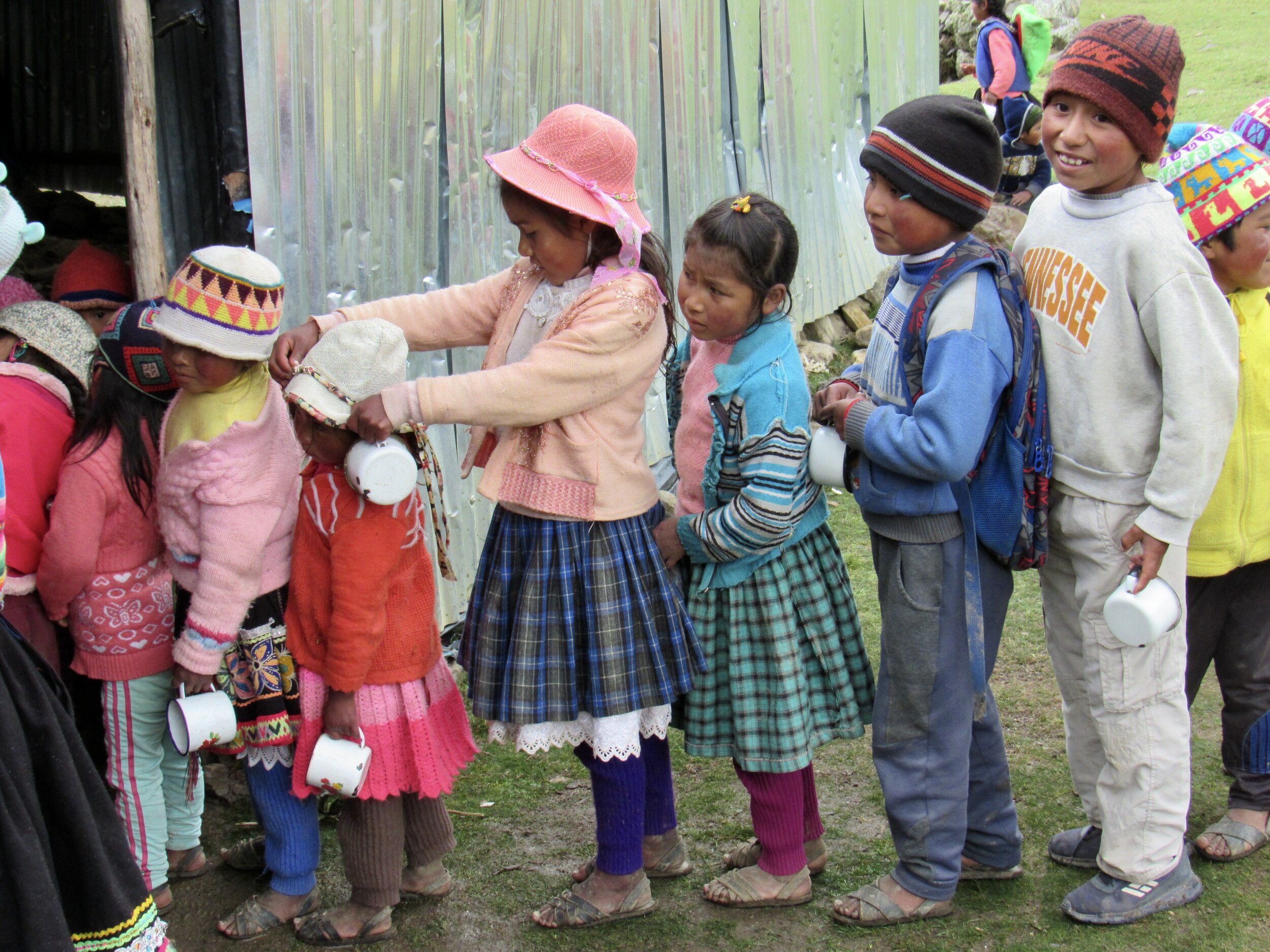
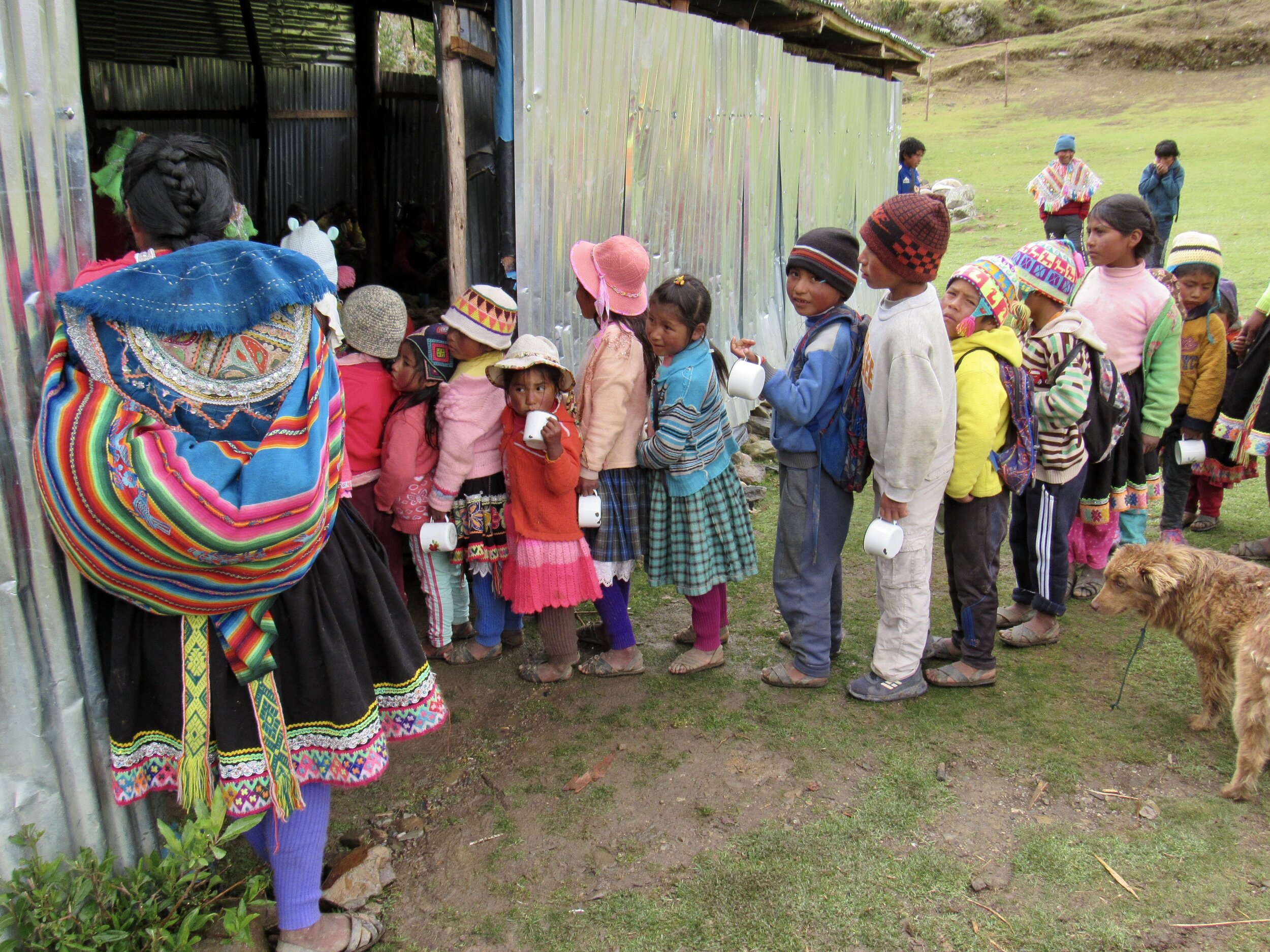
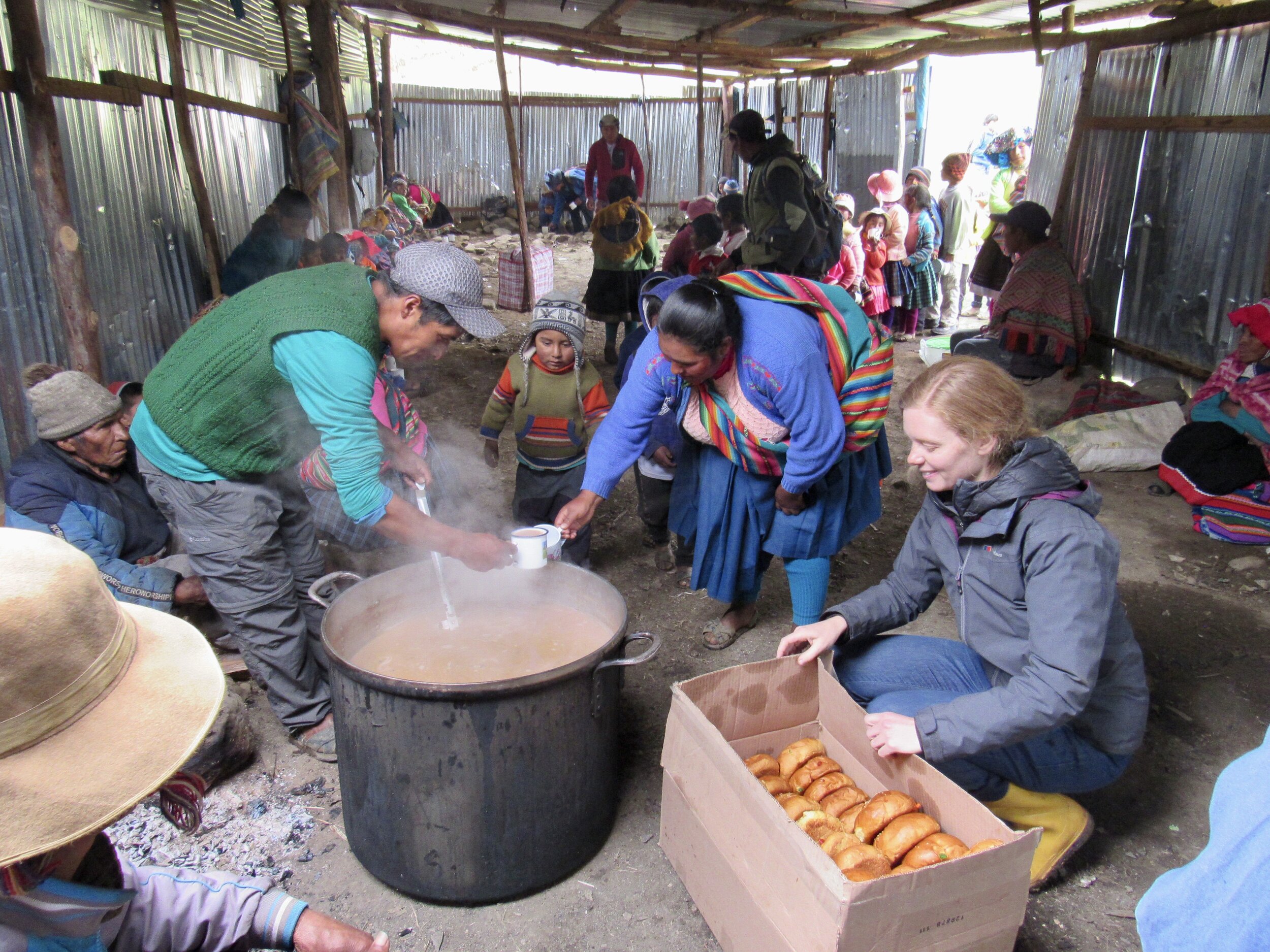
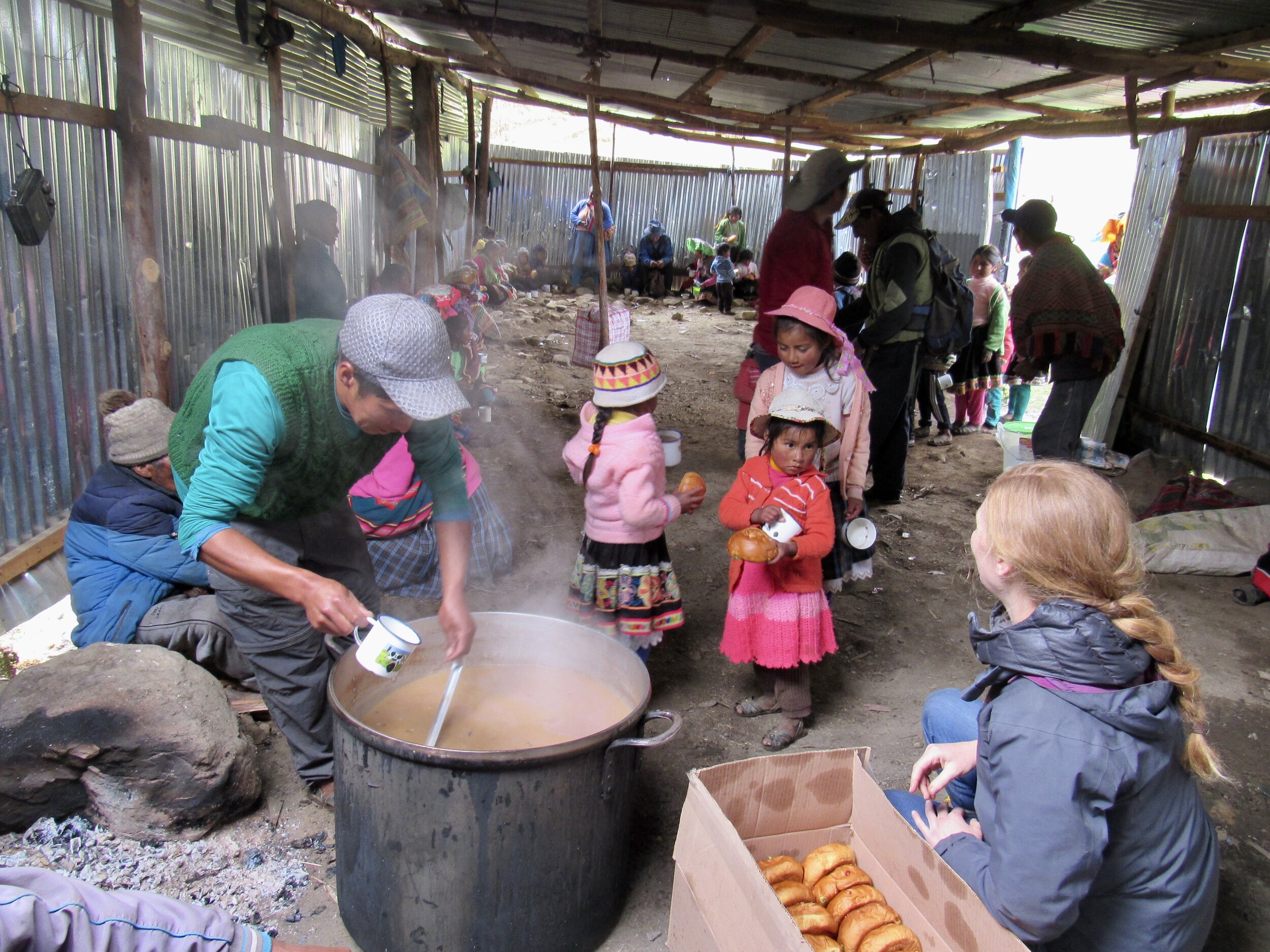

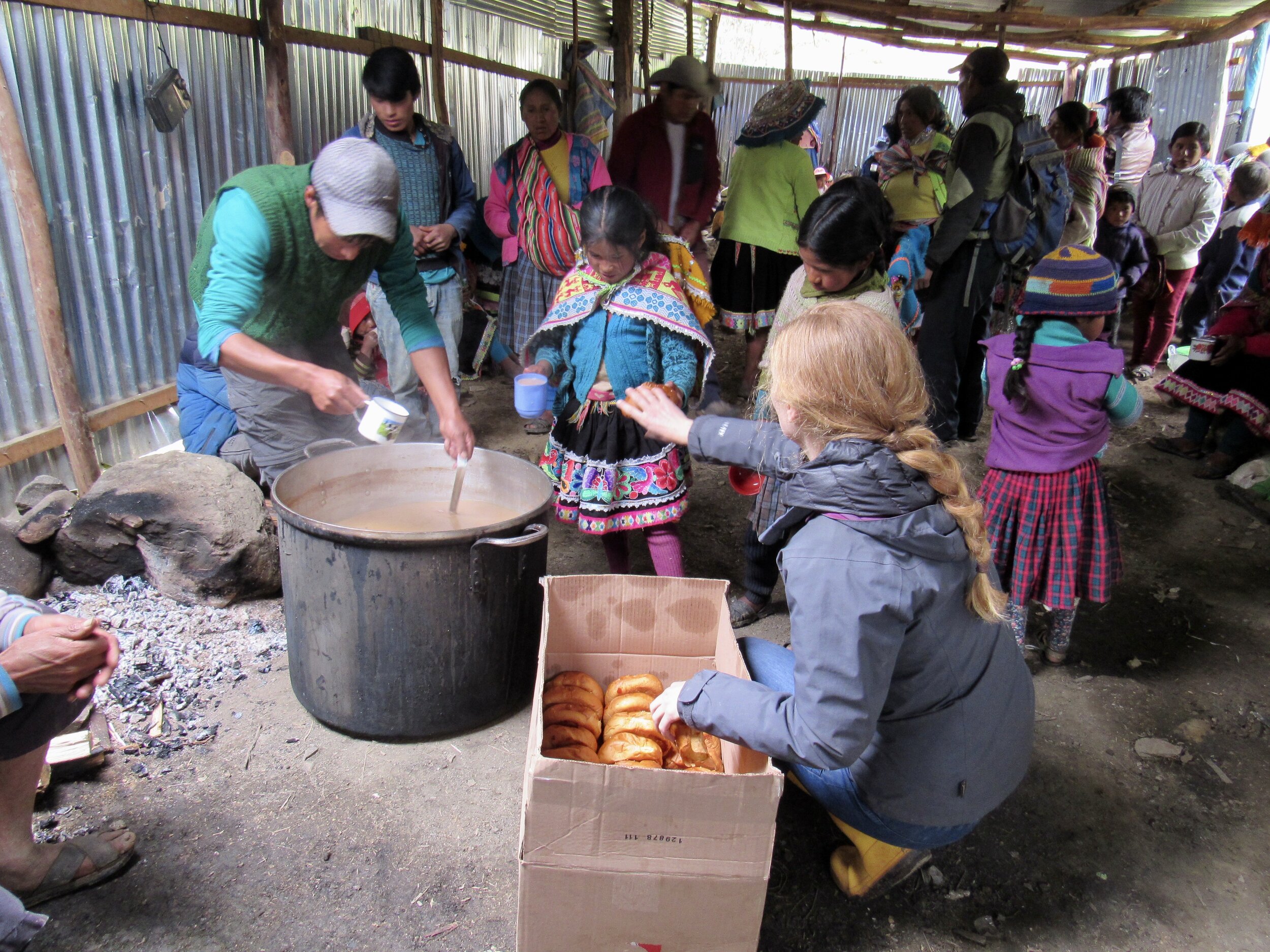
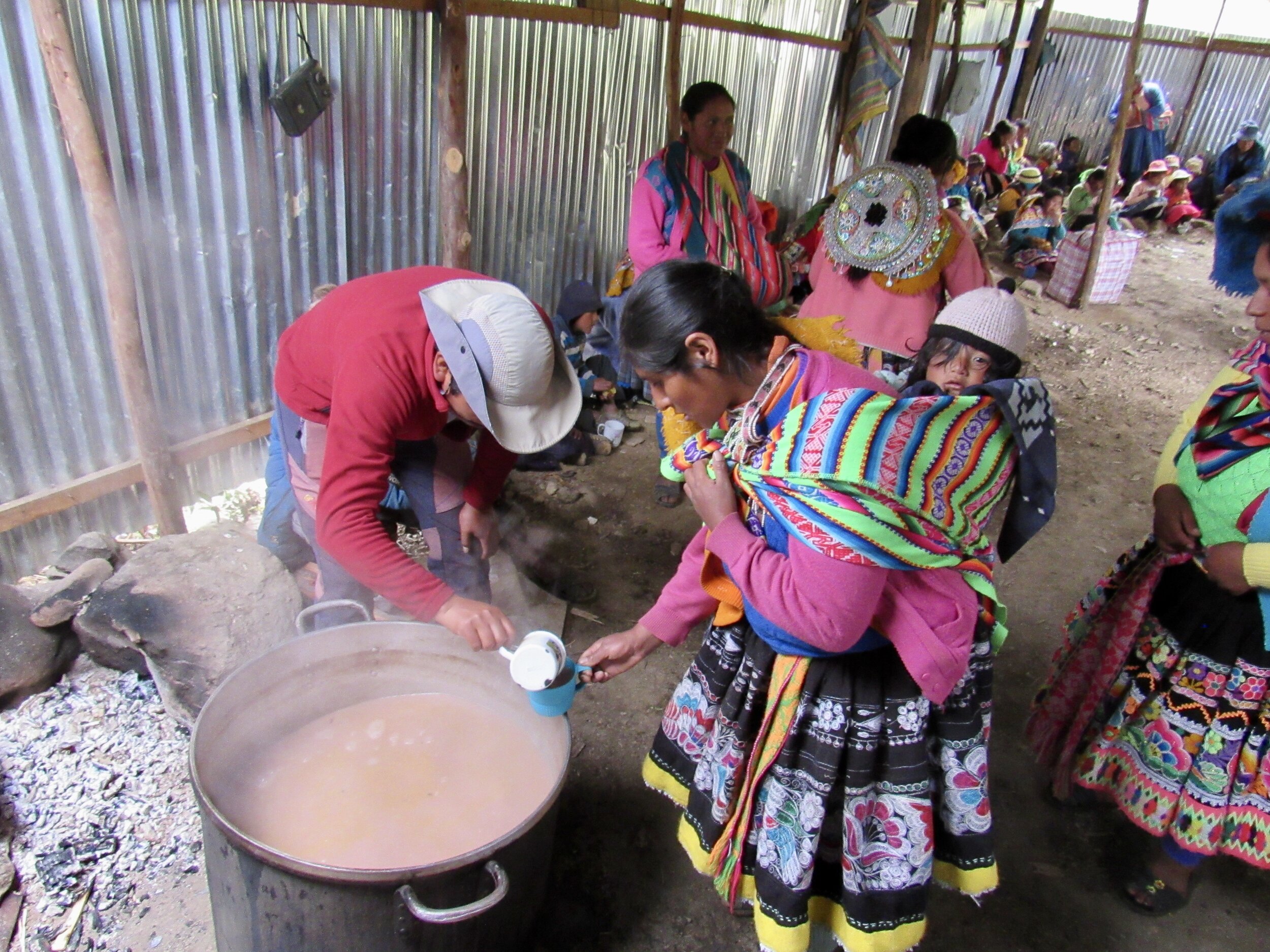
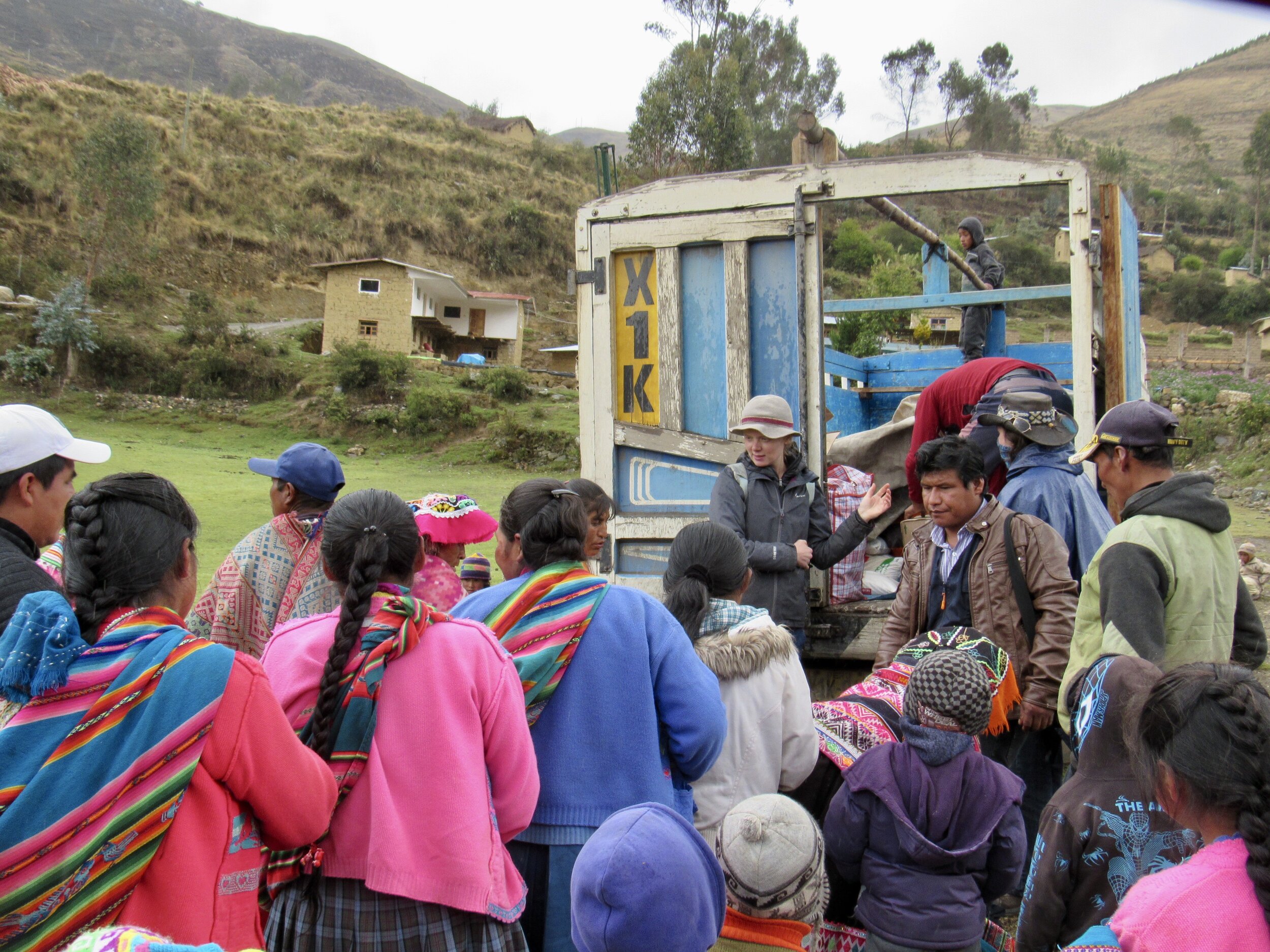
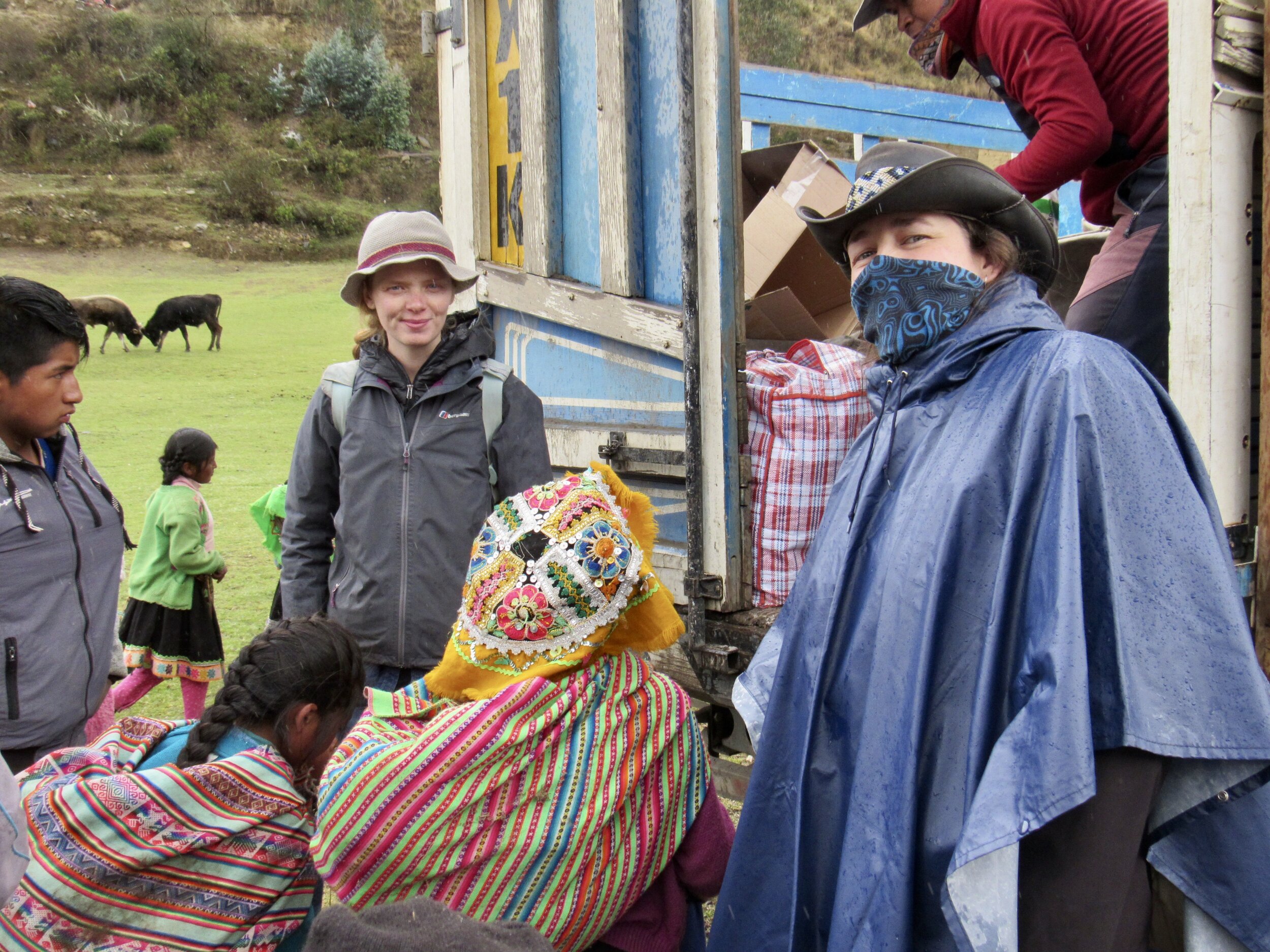

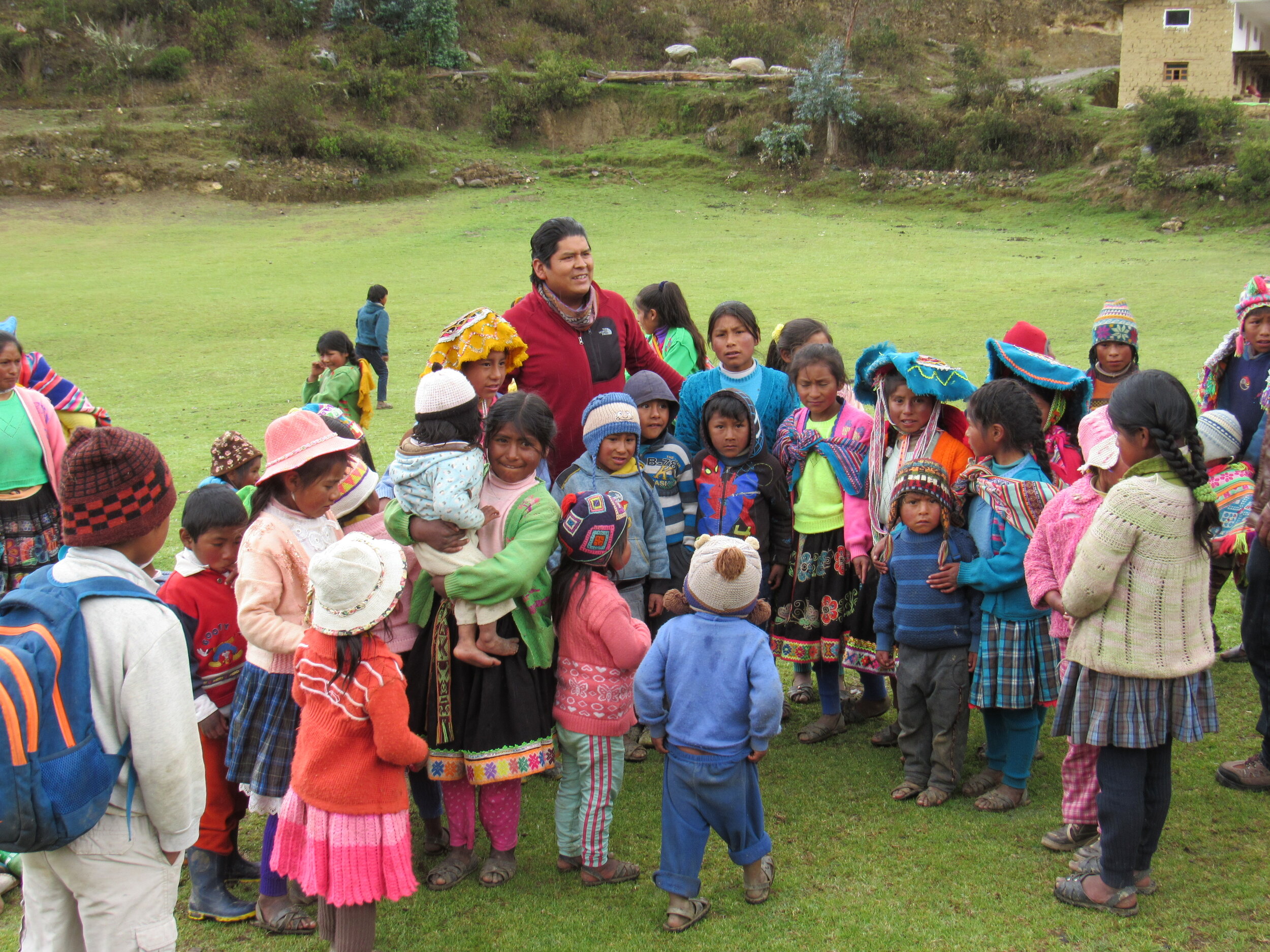
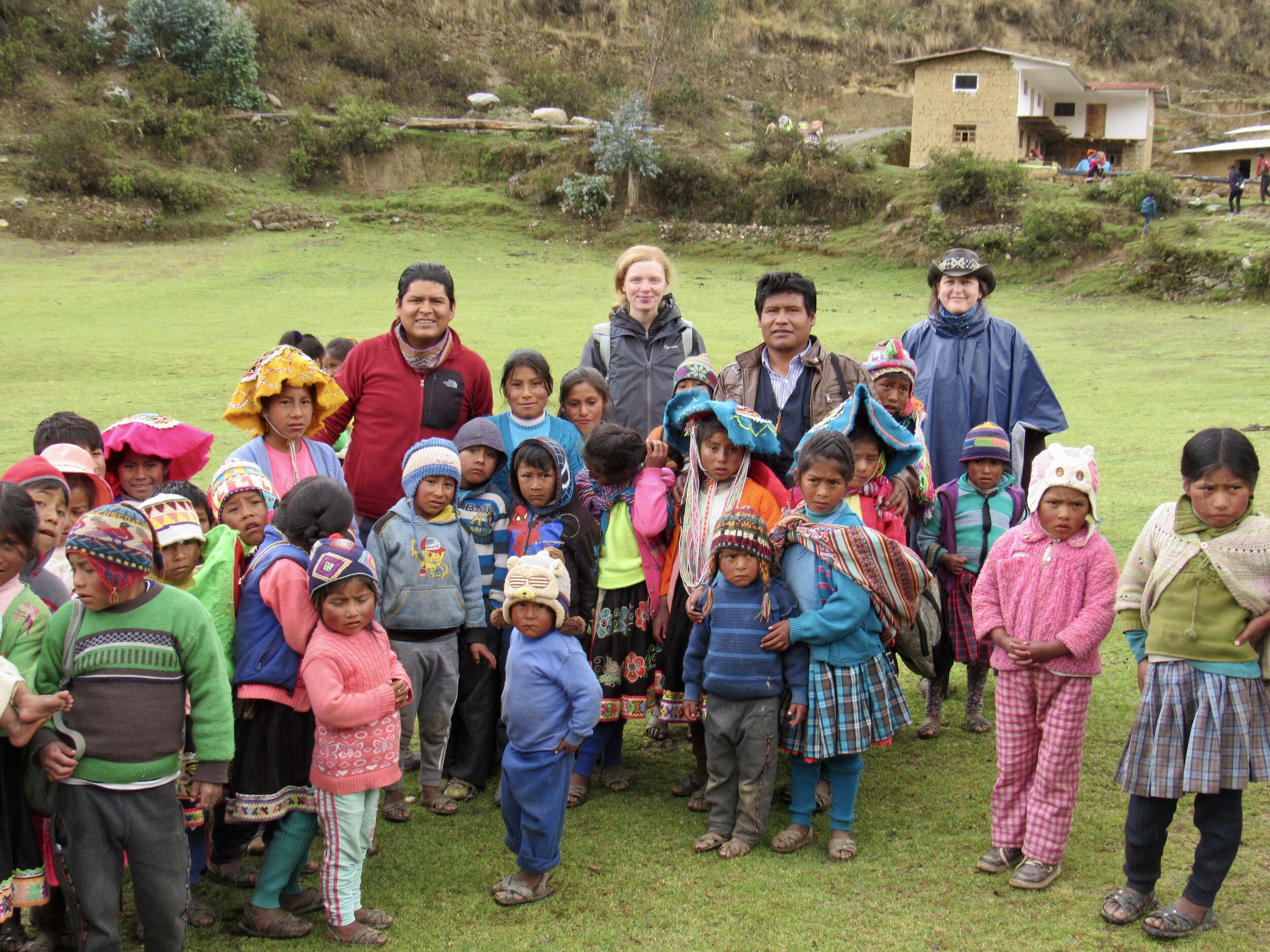
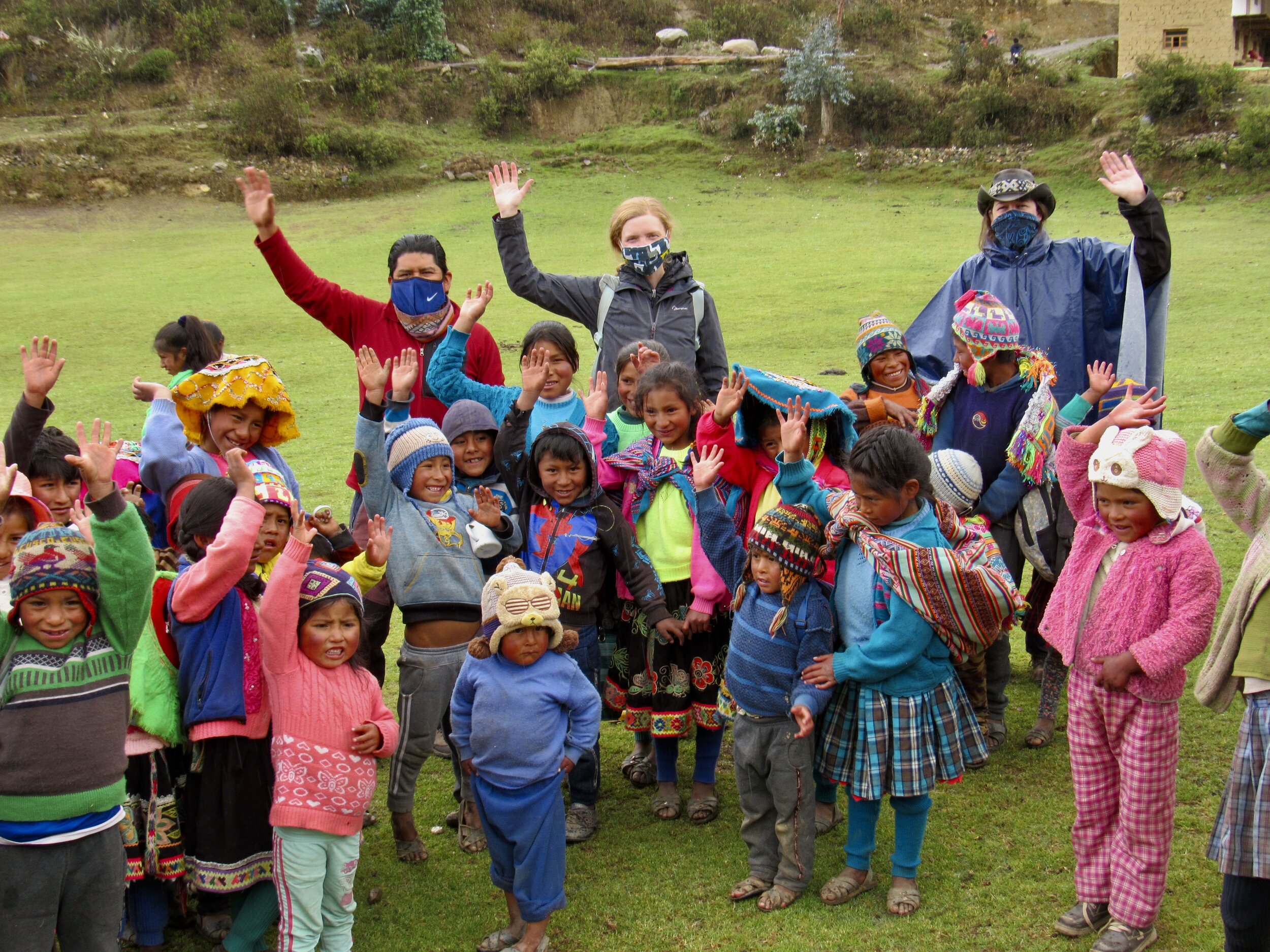
Saturday, 5 December, 2020
Today I met Auqui, Henry and Sarah at the Maytaq Wasin Hotel. Unfortunately, Henry was unable to come with us today because he has family obligations, though he promised me that he will definitely be there for the other four or five chocolatadas. Sarah is a friend from the US, who I know just because the expat community in Cusco is really small. She’s the one person I invited over for Thanksgiving, in violation of the CDC’s recommendation that nobody invite anybody over for the holiday. Henry brought the mini-panettones directly from the bakery this morning, helped us load the truck, then had to go back home.
Elio, who works in the mayor’s office in Calca, sent us a truck for all of the supplies, plus a pickup with an extended cab for us volunteers. We set out at exactly 6:30am, stopping just above Cusco to pick up Linda, who I know from the Healing House in Cusco. Like all businesses in Cusco, the pandemic has hit Healing House hard. Yoga, reiki and all of the other classes and instructor trainings done at Healing House just aren’t the same online.
It only took about an hour to drive to Calca, where we stopped for the vehicles to get gas and to pick up Elio. He has been working with Auqui to organize everything for today. We rely on local government to provide transportation for us and in some cases to notify the communities when we will be coming. Sometimes Auqui or Henry have direct contacts in the communities, but often we don’t. Many of the communities that we visit are chosen by the mayor’s office. We just call up the mayors and ask which communities in their area have not received any help since the pandemic began. There are so many tiny communities up in the mountains that there are always places that haven’t received even any help from the government.
Today’s families live in a collection of five “microcuenca” about two hours up into the mountains from the town of Calca. Collectively called Microcuenca Ccarampa Chaiña, the names of the microcuenca are: Ccachuchachu, Muñayoc, Marcani, Ttio 2B, Ttio and Airepampa. These communities are so small that they don’t have a mayor. Their only political representation is a community “president” who is supposed to advocate for them at the mayor’s office in what is effectively their county seat.
Our first stop was Ttio Grande. Ttio is pronounced differently from tio (uncle, in Spanish). Ttio starts with Quechua’s hard t, which doesn’t exist in Spanish or English pronunciation, although it is similar to the Arabic letter ﻁ. Likewise, the double c in Ccachuchachu is pronounced differently than the English or Spanish c. It’s harder, farther back in the throat and has a bit of a glottal stop to it. Quechua is very difficult to describe in writing, so I recommend listening to the interviews in Quechua that I’ve put on the Covid Relief Project’s YouTube channel.
It was raining lightly when we arrived, but kids were playing soccer and running around, clearly unfazed by the drizzle. There were a few adults in a corrugated metal structure on the side of the soccer field, who already had a giant pot of water boiling. We tossed in the cinnamon, cloves and bricks of cacao, then went back to the trucks to find the sugar and milk.
I was surprised that there were so few adults, but Elio explained that unfortunately there was a meeting already scheduled for today with elections for community president. Rather than count the place out, just because the adults wouldn’t be there, Elio decided that we would still take the opportunity to take a chocolatada and warm clothes for the children.
As our first chocolatada, we were a bit unorganized. Between May and August, we had gotten good at distributing food to one representative of each family and also managed distributing school supplies for kids. Chocolatada and clothes and food was a bit more challenging. We can’t give the clothes at the same time, because kids only have two hands. With a mug of hot chocolate and a mini-panettone, they didn’t have an extra hand for clothes.
Eventually, Auqui got everybody to sit down with their hot chocolate inside the shed (it was a big shed) and we started handing out clothes. I am not good at judging children’s sizes and because of the cold most kids were wearing several layers, likely wearing all of the clothes that they owned at the same time. Sarah, Linda and I did our best, then Auqui came to help after everybody had hot chocolate and panettone.
We couldn’t give out all of the clothes, since we still had one or two more stops. Even Elio wasn’t sure if the other communities would manage to gather in one place, or if we would be doing two more chocolatadas. We gave out the rice and oil to all of the adults present, though it was far less than we expected. As they say here “algo es algo,” something is something. At least we were able to take something for most of the kids, even if the adults didn’t all get what we had brought for them. There was a lot of hot chocolate left when we had to go, so the kids all got seconds and probably thirds after we were back on the road.
When we got to the second stop, Airepampa, Elio informed us that this would be the only other stop, so we handed over all of the remaining milk, sugar, cloves, cinnamon and bricks of cacao. This time we distributed the clothes first, which probably worked better. Some kids put them on immediately and some tucked them away in the layers they were already wearing. All of them made sure that they had two free hands for hot chocolate and panettone.
This community had prepared what they called “cariño” for us and invited us to enter one of the adobe buildings near where we had done the chocolatada. Sarah, Linda, Auqui and I were served boiled new crop potatoes and each of us a quarter of a roast guinea pig. As a vegetarian, I happily put my guinea pig piece on Auqui’s plate and stuck with the potatoes.
I complimented their choice of three of my favorite potato varieties: maqtillo, peruanita and compis. They apologized a bit, saying that the crop was very poor because the rains were a full two months late. Most of the potatoes that they had planted in August dried up and died before they could produce anything. The rains finally started this week, but for many farmers it was too little, too late. They also told us that their alpaca had suffered from the drought. Most of the alpaca who gave birth in the past two months had stillborns because they didn’t have enough grass to eat. Plants at this altitude are small and scarce, so when the rains didn’t start in mid-September, there was very little left for their alpaca to eat.
After lunch, I asked Auqui to interview Gregorio, the community president, and Elio. I’ll work on making a video of today’s event and post that on the Covid Relief Project YouTube channel asap. Before we left Airepampa, we distributed the rice and oil to every family, but still had a surprising amount left over. I was hoping that when we drove back through Ttio Grande we would be able to distribute more, but it started raining hard as soon as we were back on the road. When we got to Ttio Grande the rain was coming down in solid sheets and we didn’t see anybody outside. I’m a little sad that we didn’t distribute anything, since this is definitely one of the poorest communities that we’ve visited, if not the poorest. Still, this is the first of at least five chocolatadas, and I know that there are lots more needy families that we’ll see between now and Christmas. It’ll be okay to save what we have leftover for next Saturday.
